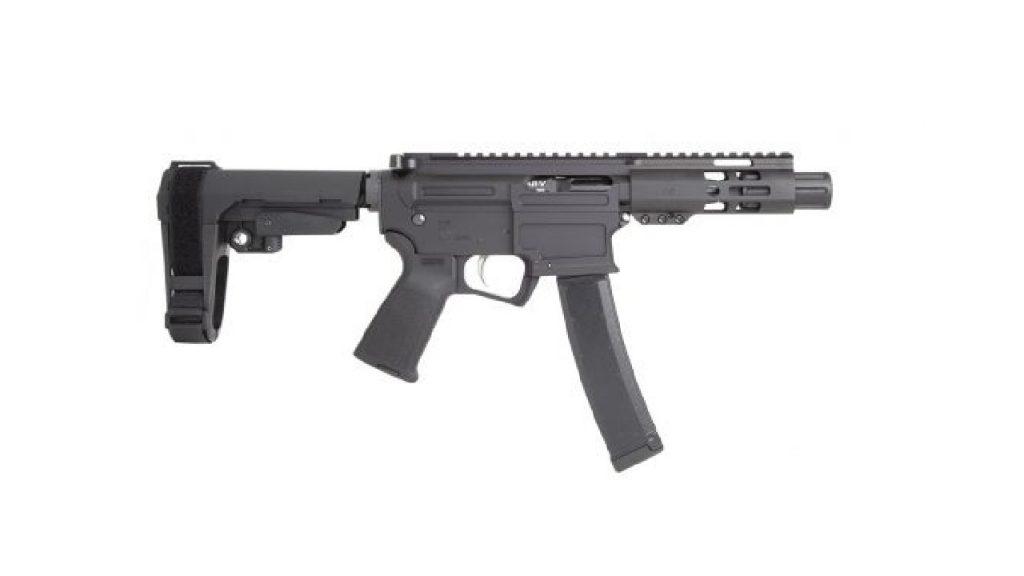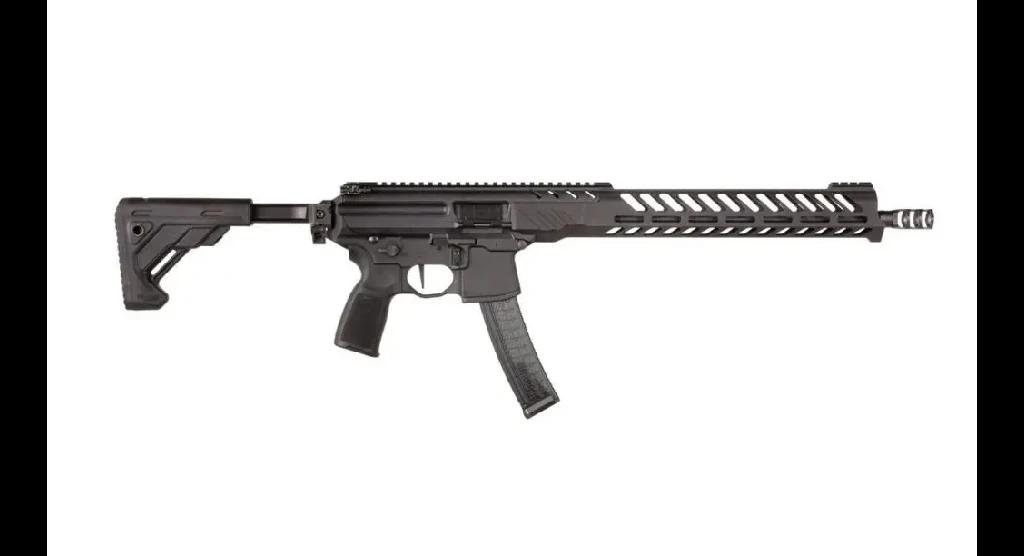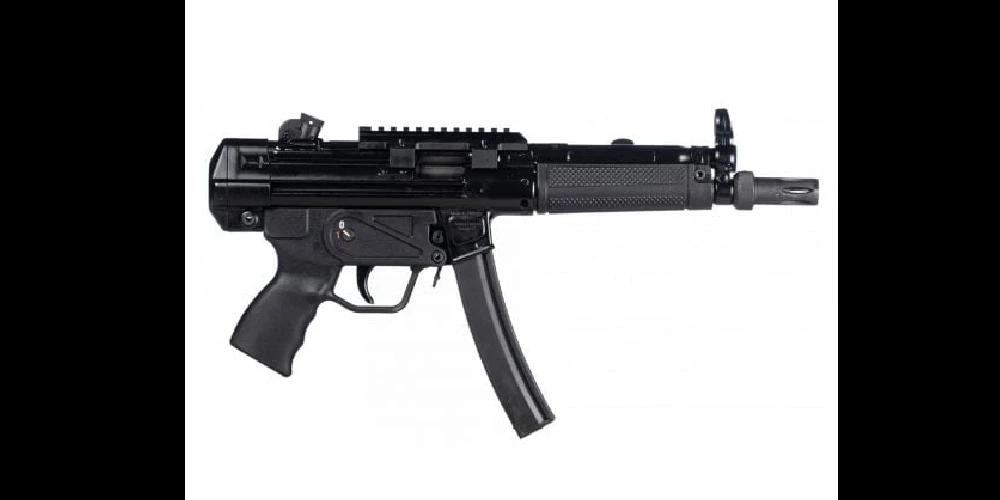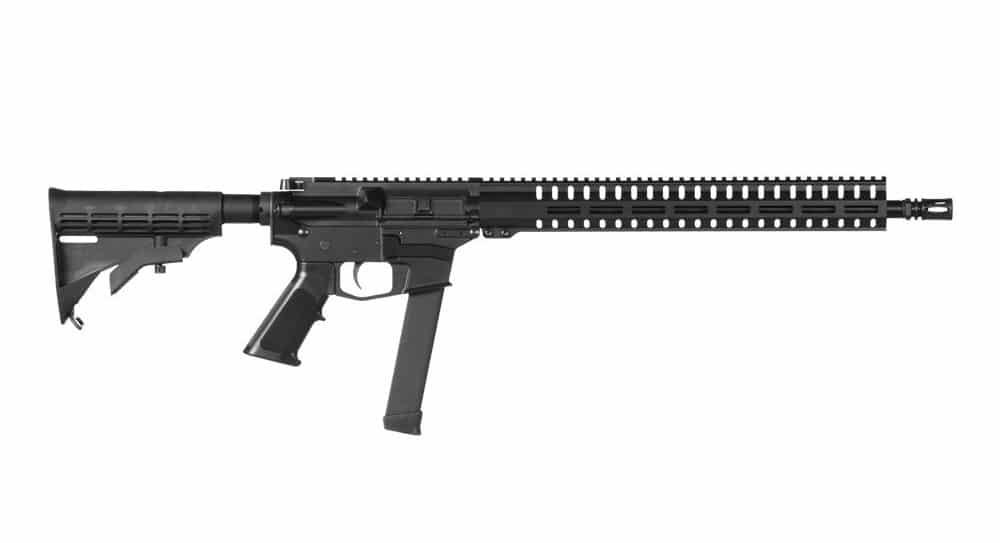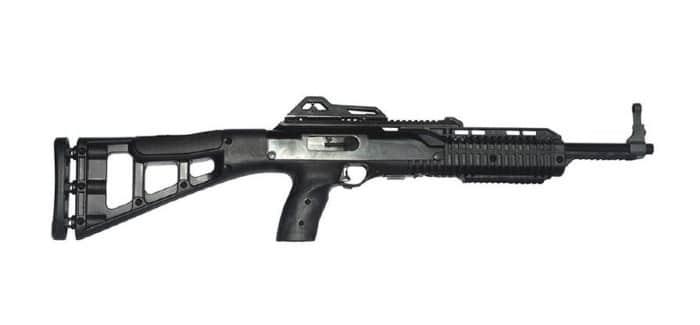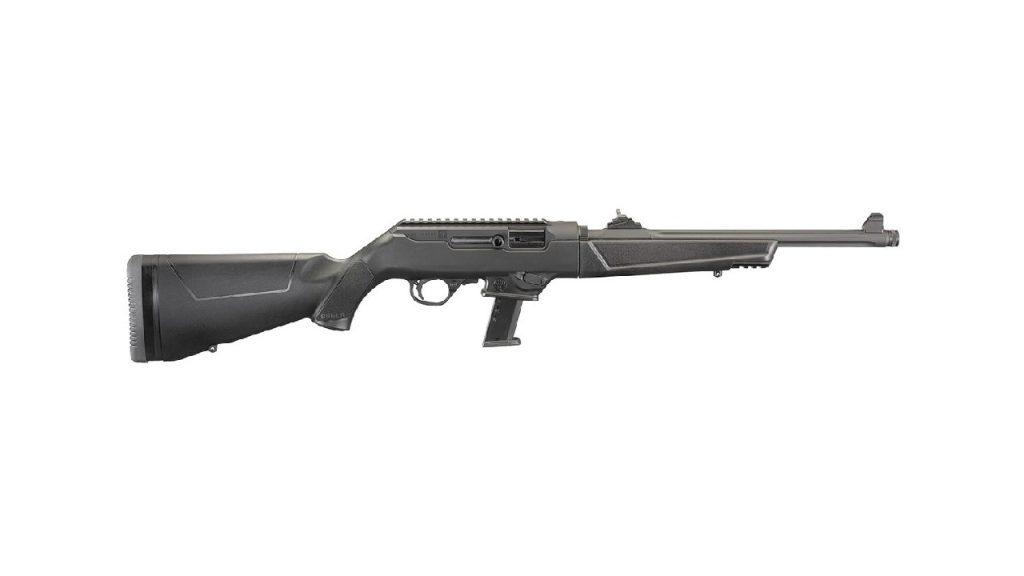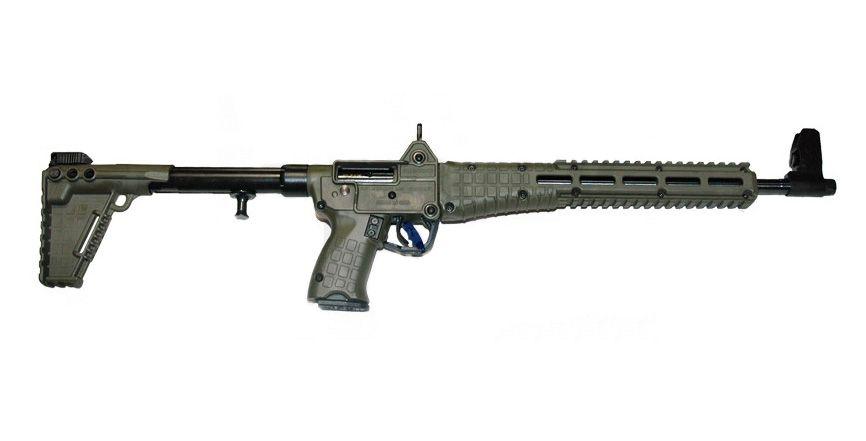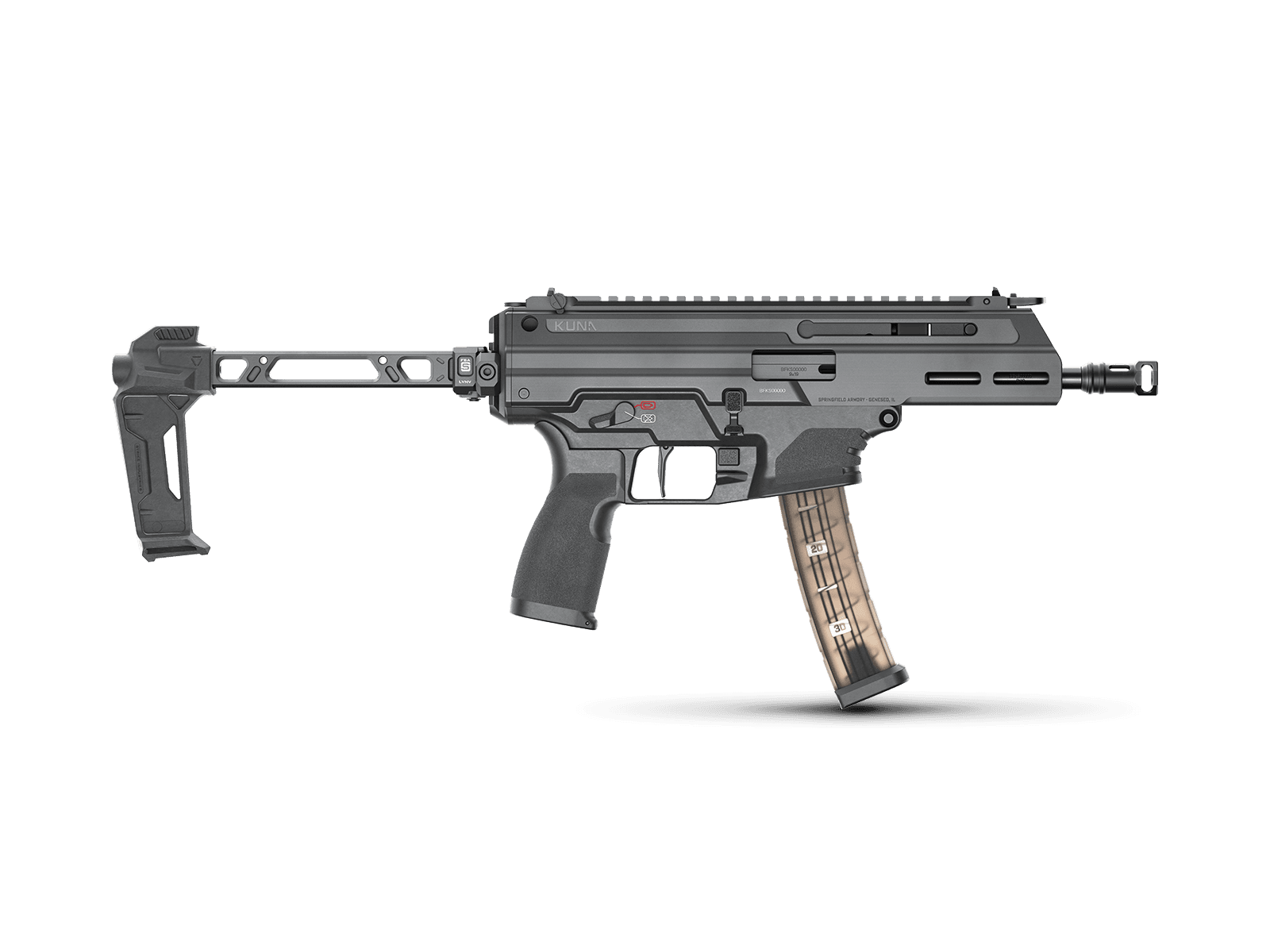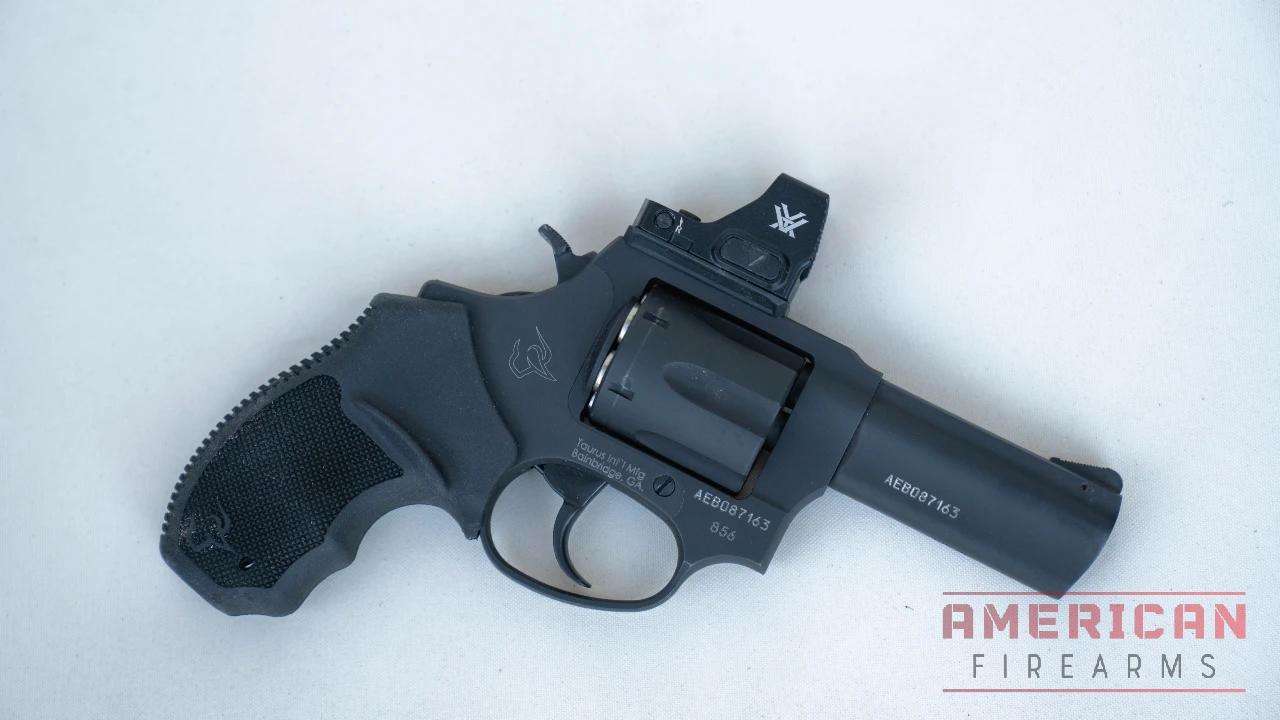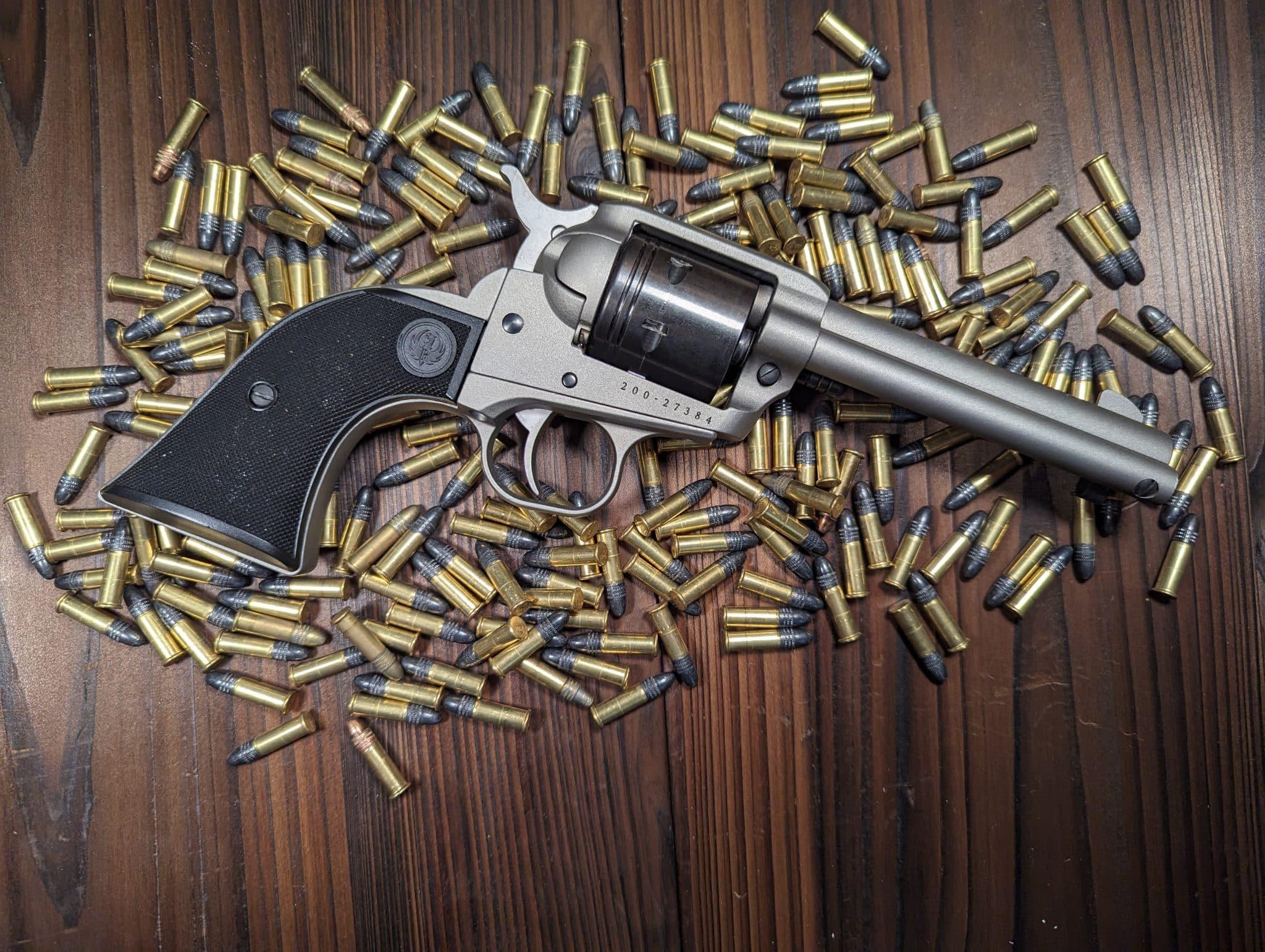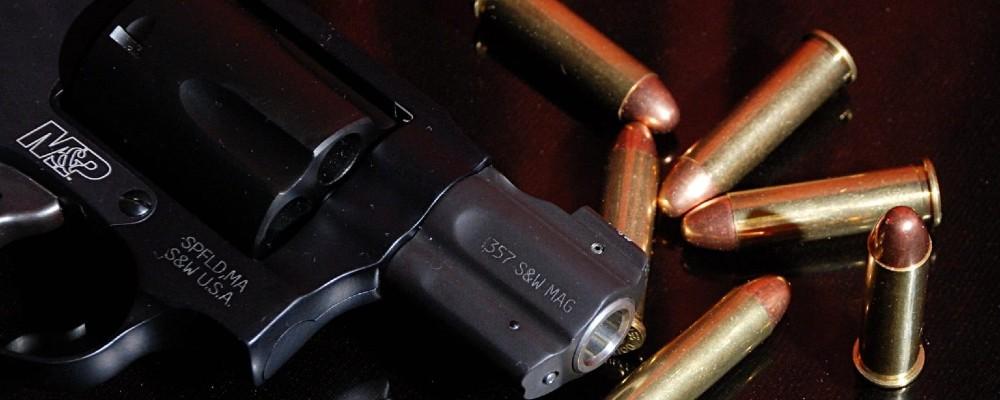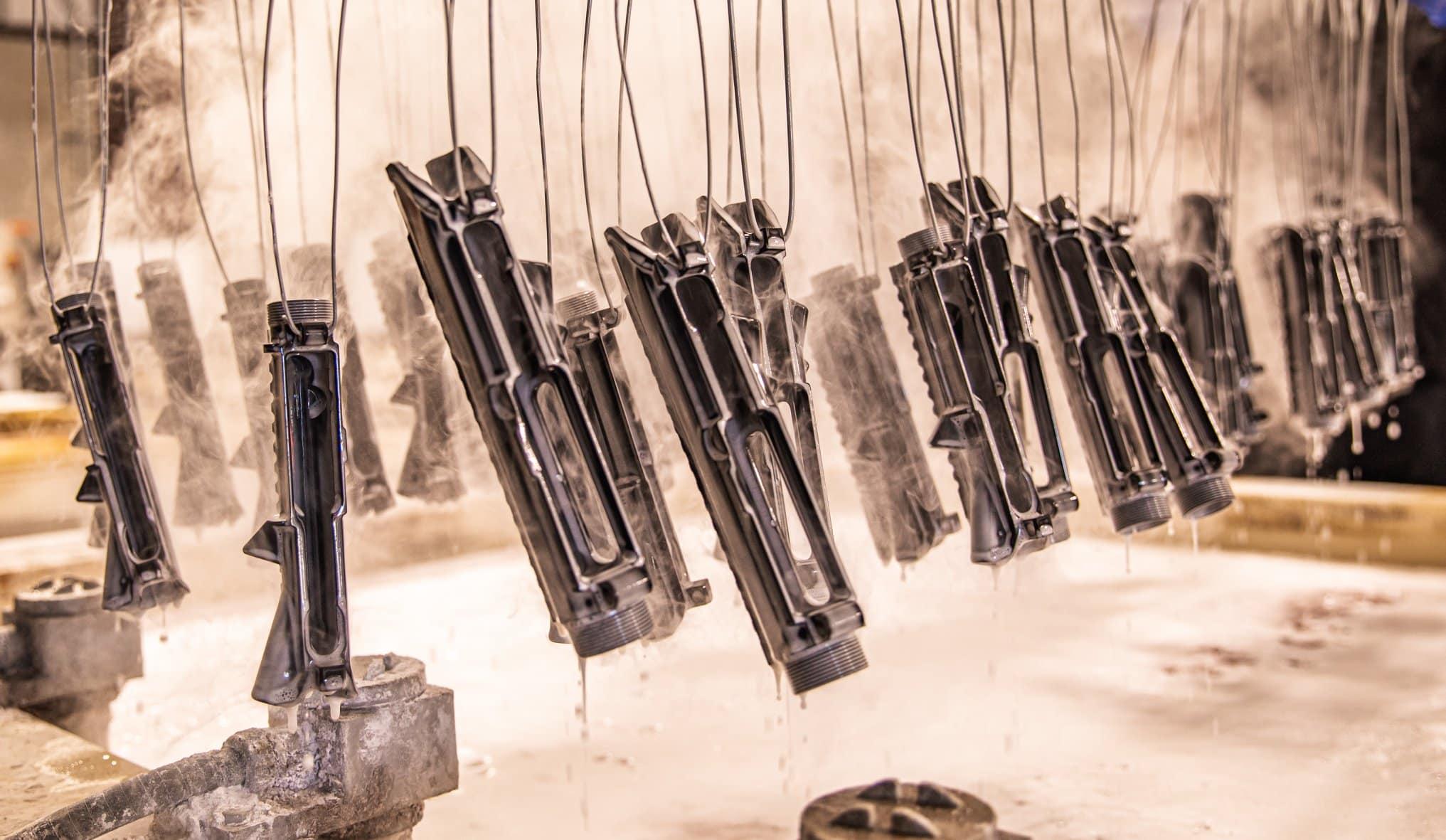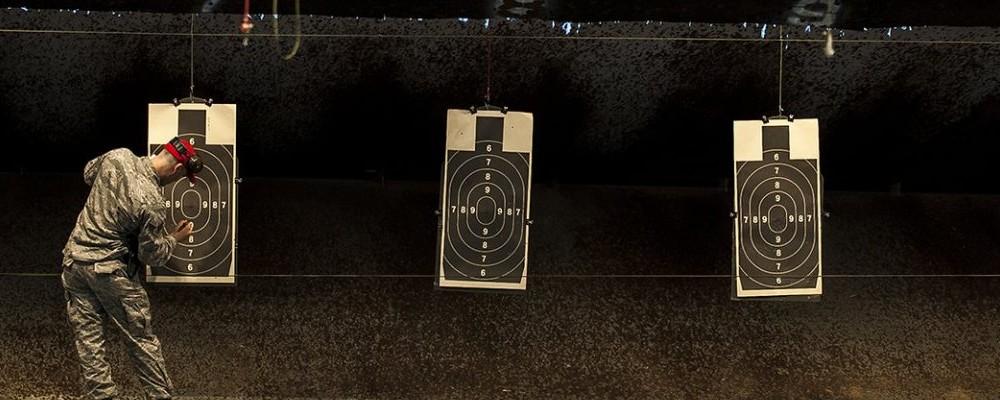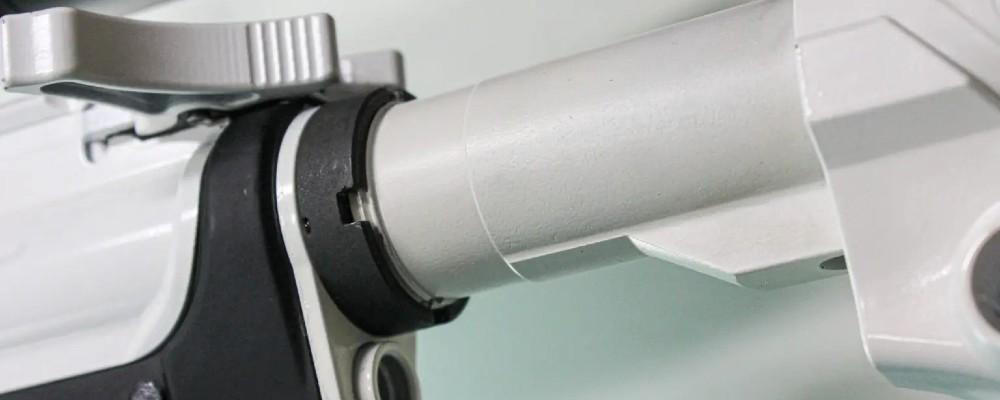9mm PCC Picks: Pistol Caliber Advantages Explained
Written By
Kenzie Fitzpatrick
Competitive Shooter
Edited By
Michael Crites
Licensed Concealed Carry Holder
Share:
Products are selected by our editors. We may earn a commission on purchases from a link. How we select gear.

Updated
Nov 2025
In the vast landscape of firearms, pistol-caliber carbines (PCCs) occupy a unique niche. Neither fully a pistol nor a rifle, these hybrid weapons have sparked debates and discussions among gun enthusiasts for decades.
But what is it about PCCs that has kept them in the limelight for so long?
In This Article
The Historical Journey of PCCs
Increasingly popular in the past 20 years, pistol caliber carbines or PCCs offer a lot of benefits to the user and few drawbacks, making them the go-to choice for many in a wide variety of roles. From plinking to competitions, these little wonders give you an unreal bang for your buck.
The concept of a carbine or rifle feeding on handgun ammunition isn’t a modern invention. In fact, during the days of the American West, such firearms were a staple.
Pioneers, facing unpredictable challenges from blizzards to bandits, often relied on the convenience of having their Colt Frontier and Winchester 1873 feed from the same ammunition source. This not only ensured they were always armed but also reduced the logistical challenges of carrying different types of ammunition.
Fast forward to today, and the debate around the practicality of PCCs is as alive as ever. Some view them as the perfect blend of a rifle’s stability and a pistol’s maneuverability, while others see them as a compromise that delivers neither’s full benefits.
Yet, their enduring presence in the market and their resurgence in competitive shooting events speak volumes about their versatility and appeal.
The Modern-Day Appeal of PCCs
PCCs, especially those chambered in 9mm, offer a unique combination of benefits. They can be optimized for self-defense, particularly in confined spaces like homes. Their size makes them more maneuverable than traditional long guns, and their design often allows for compatibility with popular handgun magazines, adding to their convenience.
Moreover, the 9mm cartridge, when fired from a carbine, gains a modest velocity boost, making it more effective.
The reduced recoil compared to larger calibers, combined with the stability offered by a carbine design, makes PCCs particularly appealing to both novices and experts.
Expert Insights and Perspectives on PCCs
As a competitive shooter and firearms instructor, I often turn to PCCs when teaching classes because of the approachability of the 9mm cartridge in the larger rifle or large-format pistol.
In rifle format, a PCC allows new shooters to approach longer distances without the intimidation of larger center-fire cartridges — helping to develop the right skills and habits before reaching out even further.
Side By Side Comparison
Our Top Picks
Displaying 1 - 1 of 8
Awards
Price
Overall Rating
Description
Rating Categories
Accuracy
Ergonomics
Features
Fit & Finish
Reliability
Value

$799.99 at Palmetto State
Jump to Details46
PSA's Gen4 PCCs offer reliability and affordability.
8/10
8/10
6/10
7/10
8/10
9/10

$1967.99 at Palmetto State
Jump to Details48
Team SIG’s Lena Miculek has used an MPX to win her last four PCC Nationals championships.
9/10
8/10
8/10
9/10
9/10
5/10

$1346.99 at Palmetto State
Jump to Details42
Do the “HK Slap” without the price tag. T
7/10
7/10
6/10
7/10
9/10
6/10
$1350.99 at Palmetto State
Jump to Details49
CMMG has picked up the 9mm AR torch that Colt dropped.
9/10
8/10
8/10
8/10
9/10
7/10

$323.99 at Palmetto State
Jump to Details40
Hi-Point has been cranking out this homely but effective blow-back action carbine since 1995.
6/10
6/10
6/10
6/10
7/10
9/10
$699.99 at Palmetto State
Jump to Details47
With their ear to the ground for what the public wanted, Ruger introduced this updated Pistol Carbine in 2017.
8/10
7/10
7/10
8/10
9/10
8/10
How We Selected
Precision Testing
Our team rigorously assesses each PCC to gauge its accuracy, ensuring you hit your mark.
User Comfort Assessment
We evaluate the design and ergonomics of each model, winnowing down our recommendations to the most comfortable shooting experience.
Durability and Consistency
We review the reliability of each PCC, ensuring that our recommendations perform when it matters.
Cost-Value Analysis
We weigh the features and performance of each PCC against its price, ensuring that our top picks provide the best bang for your buck.
The Best 9mm PCCs
1. Best Overall: PSA AR-V PCC
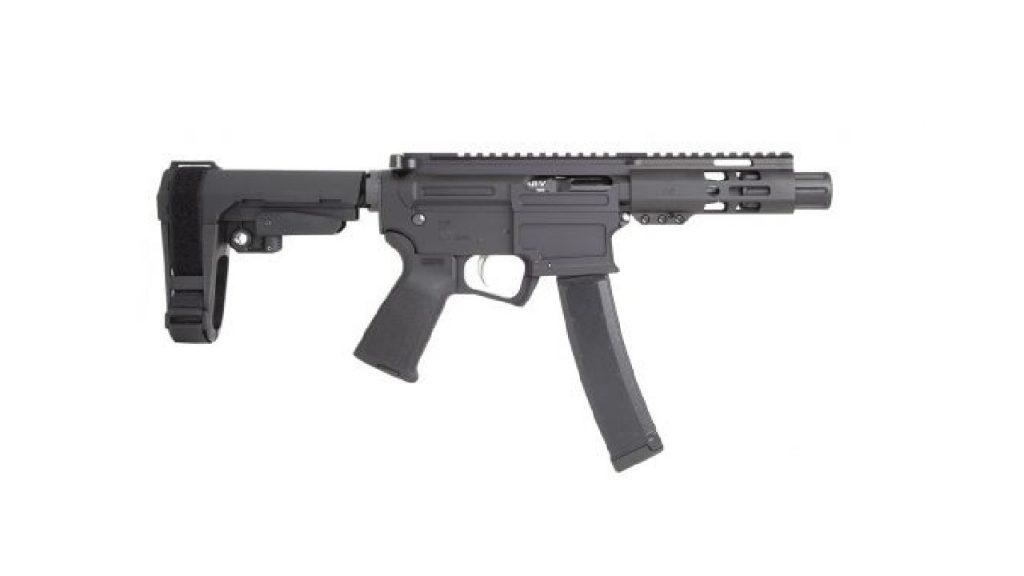
$799.99

46
EXCEPTIONAL
Performance Scores
Palmetto State Armory continues to give us what we ask for, and their Gen4 PCCs offer reliability and affordability.

Build quality
These come with a 10.5″ chrome moly steel barrel in 9mm with a 1/10 twist with a PSA 9″ Lightweight M-Lok free-float rail and a bird cage style A2 flash hider to keep the unwanted fireworks at a minimum.
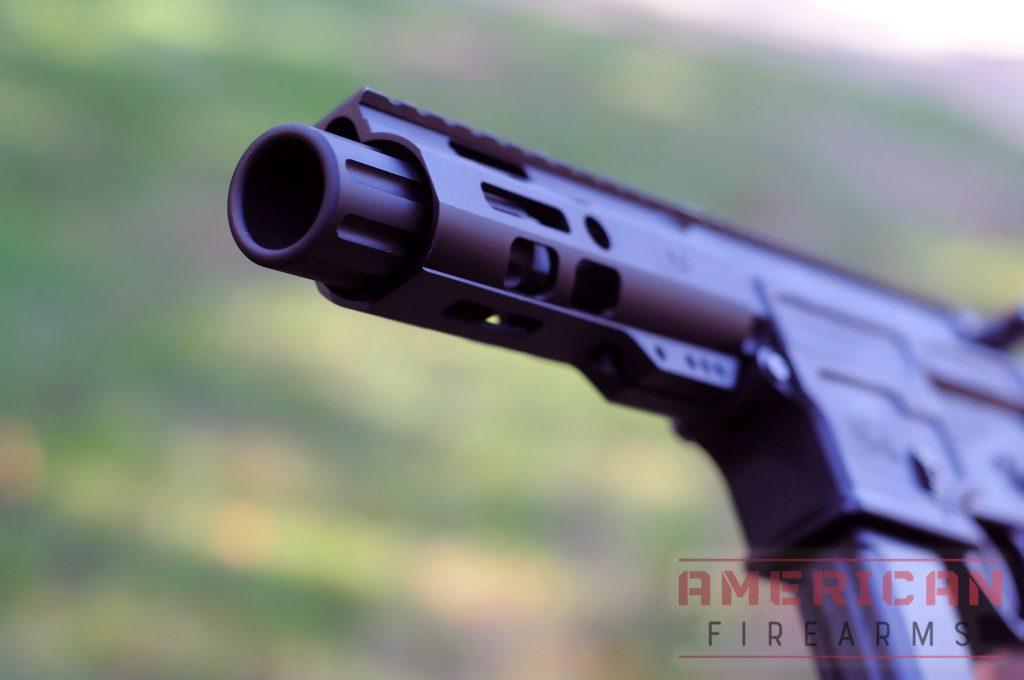
Upper is a US-made billet 6061-T6 Slick side AR upper which is nicely hard coated in anodized black, because why not?
Lower is a forged 7075 T6 aluminum with more hard coat and engineered to use a 9mm Glock magazine.
Hard value to beat

As usual, PSA offers great value in their products, and their PA-9 is perfect for plinking, range fun, home defense, or a car gun (if you’re so inclined), plus PSA gives you the advantage of choosing nearly any AR-style rifle they make in a pistol caliber, so you get a lot of variety from the PA-9 platform.
Shortcomings
Anyone with AR experience understands that there are a few conventions you can expect from one AR to another — things like rails, triggers, and control locations & activation. There are a few things that struck me as a little strange with the AR-V. Why PSA opted for a pull mechanic for both the bolt & mag releases is one.
Why not standard buttons? Innovation? I’m personally not a big fan of relearning basic controls for large-format firearms.
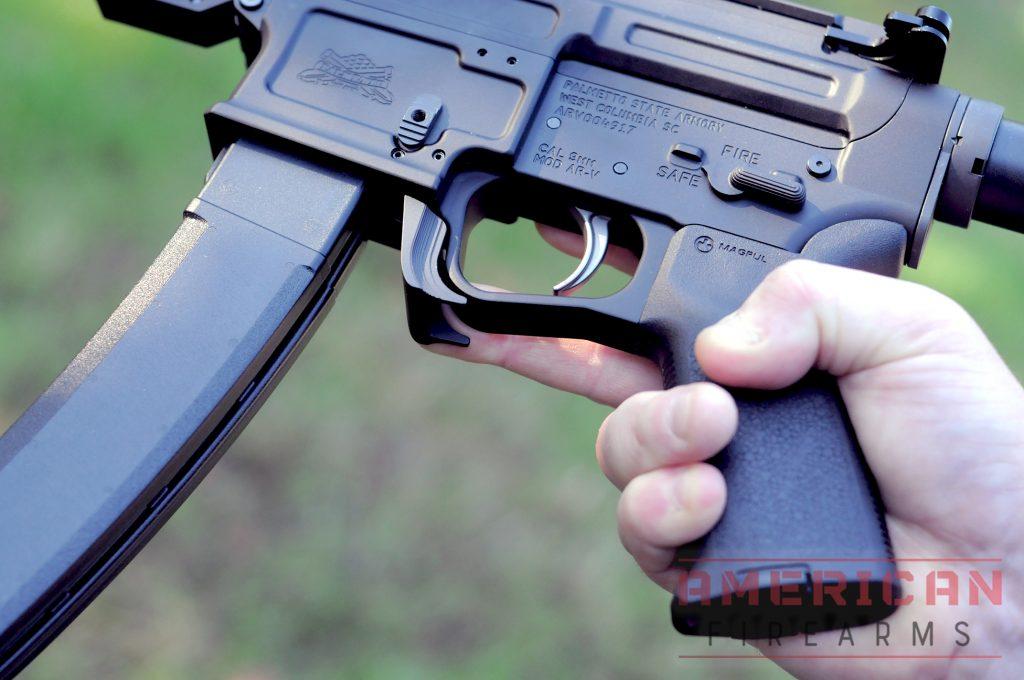
Also, the mags aren’t Glock-compatible — but CZ Scorpion 35 Round magazines. I get the aesthetic quality of the curved, thicker mags — Glock mags can certainly feel a little anemic on large-format pistols — but Glock mags are much, much more popular.
You get 2 more rounds with the CZ mags — and the double-stack orientation makes them much easier and faster to load — but the AR-V is likely the only firearm you’ll own that can use them. No last round bolt hold open either…

Also, one thing to note — the barrel shroud doesn’t leave enough space beneath the handguard and shroud to actually mount anything to the M-Lok slots, so you better like it the way it is.
The interior diameter of the handguard is about 1.37 inches so your suppressor choice will be pretty limited, but a swap is possible.
2. Best 9mm Carbine Rifle: Sig Sauer MPX PCC

$1967.99

48
EXCEPTIONAL
2026 Awards & Rankings
Performance Scores
Billed as “industry-leading” when it comes to PCCs, Sig Sauer’s MPX line of carbines has been on point when it comes to competition use and Team SIG’s Lena Miculek has used one to win her last four PCC Nationals championships.

It is easy to see why these guns are so successful as they have a gas-piston action, 5-position telescoping/folding stock, carbon fiber barrel, and Timney single-stage trigger right out of the box for snappy trigger pull.
That combination of features really reduces recoil and enables the MPX to nail targets well beyond 150 yards, making it pretty special in the world of 9mm PCCs.
Add in the ambi controls and AR-platform layout and you have a high-performing PCC that is intuitive to use and incredibly fast shooting.
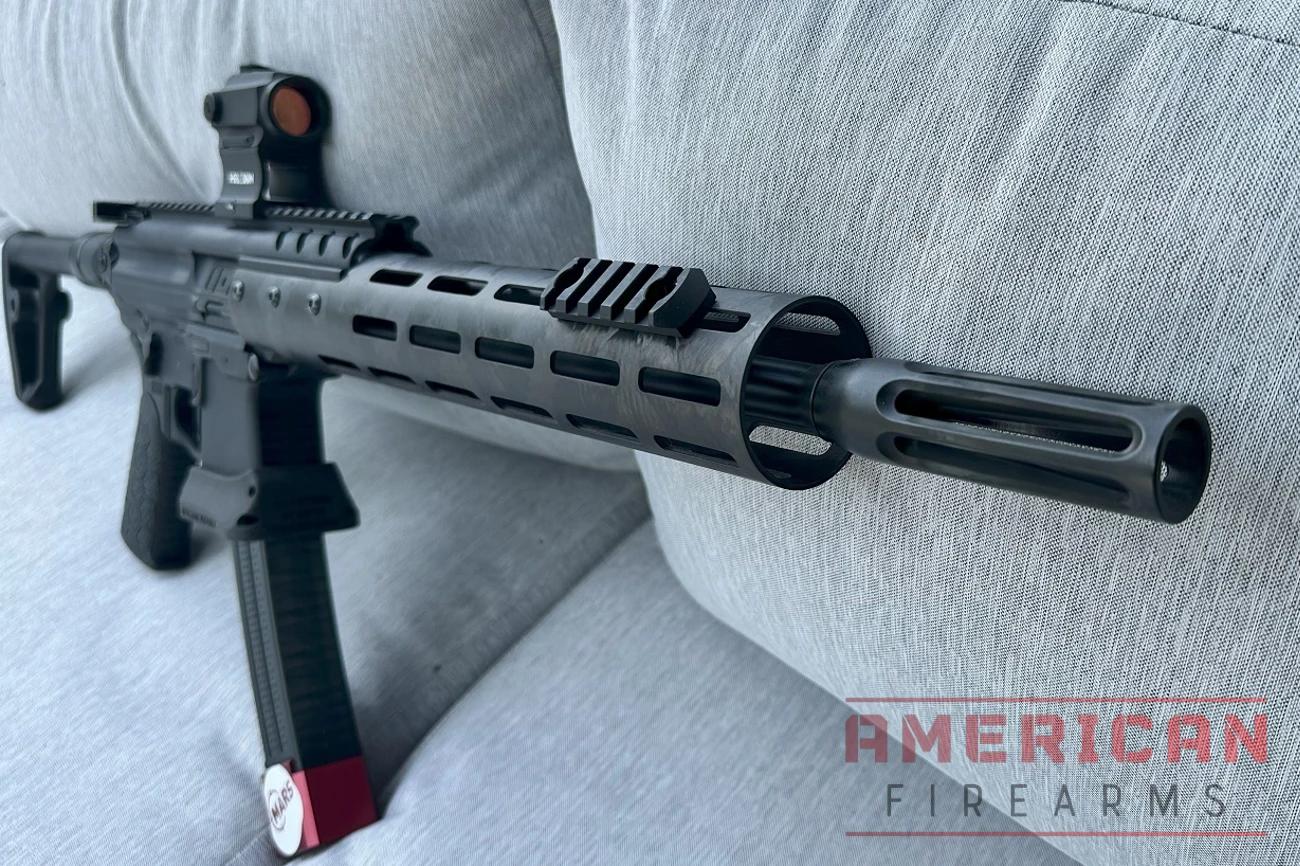
For those with a taste for something less high speed, there are bone stock models while the MPX K that scratch the pistol caliber long gun itch and MPX Copperhead pistols offer something for those wanting to go more compact.
Yes, the MPX is expensive — as are the proprietary mags — and it’s hard on trigger assemblies due to the high speed of the bolt, but if you want a premium shooting experience or a competition rig that can hang with the big dogs the MPX is a beast of a PCC. Want more on the MPX? Check out our hands-on review.
3. Best MP5 Clone: Century Arms AP5
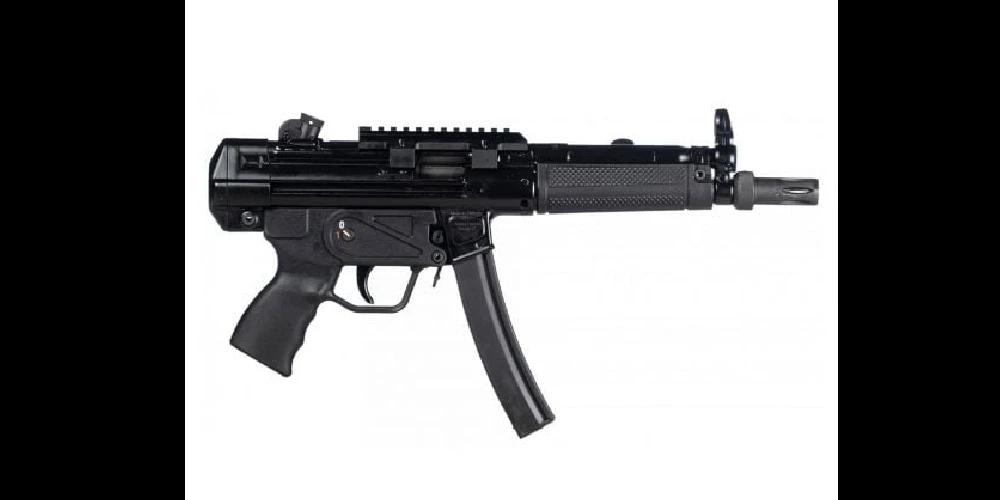
$1346.99

42
EXCEPTIONAL
2026 Awards & Rankings
Performance Scores
Do the “HK Slap” without the price tag. The AP5, or “Apparatus Pistol,” comes in three sizes – the AP5, AP5-P, and AP5-M.
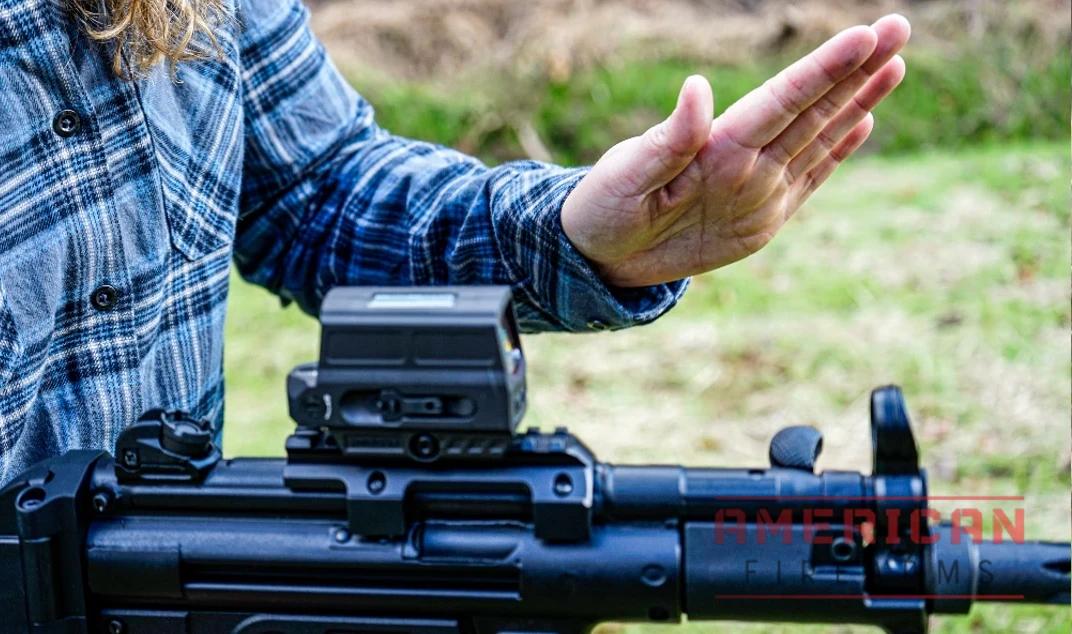
The AP5 is the largest version, with an 8.9-inch barrel and an overall length of 17.9 inches. The AP5-P is an intermediate-sized version with a 5.8-inch barrel and an overall length of 13.7 inches. Finally, the AP5-M is the smallest version, with a 4.6-inch barrel and an overall length of 12.79 inches.

The AP5 is chambered in 9mm Luger and, similar to the HK MP5, uses a semi-automatic roller-lock delayed blowback action. If you’ve never experienced shooting one, it’s the most comfortable and soft shooting gun.
One thing I love with these roller-lock pistols is how there is little to no felt recoil, even when using hotter ammunition. The AP5 and AP5-P include a detachable muzzle device, making great suppressor hosts.
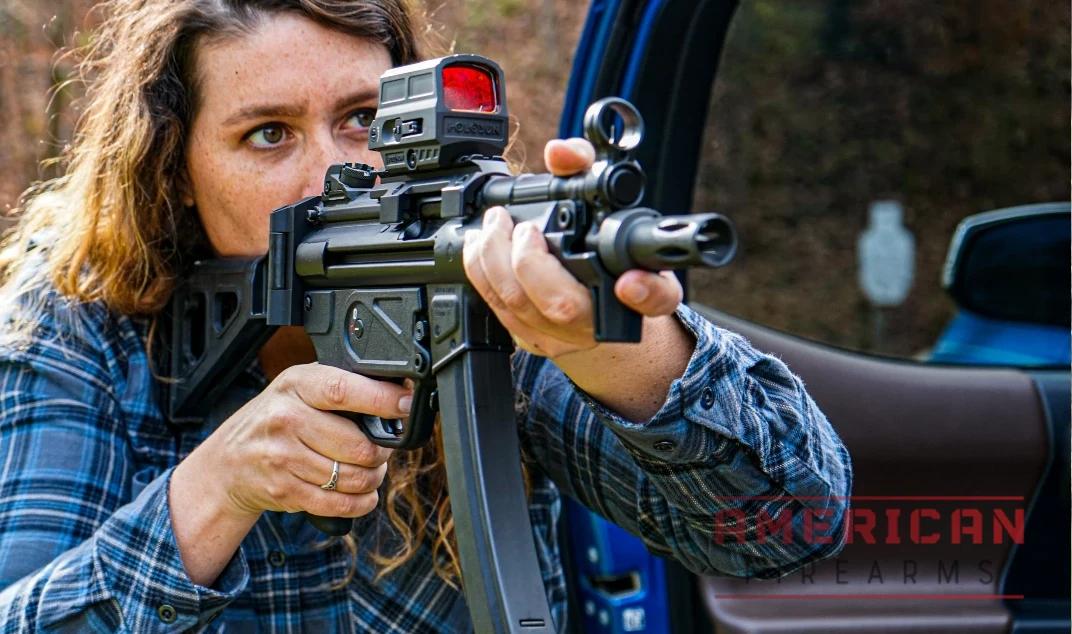
These guns have a 30-round magazine capacity, a top-mounted Picatinny optic rail, and the classic-style adjustable rear sight.
I chose the AP5-P with a folding brace to collapse it, throw it in a bag, and use it as a truck gun. It’s easily deployable if I need it quickly, runs hollow points and full metal jackets flawlessly, and has easy controls to manipulate the safety or load and unload the gun.

4. Best AR Format: CMMG Resolute

$1350.99

49
EXCEPTIONAL
2026 Awards & Rankings
Performance Scores
One of the country’s leading manufacturers of AR-15s, it can easily be argued that CMMG has picked up the 9mm AR torch that Colt dropped when the latter company shied away from commercial sales of their SMG in a semi-auto platform and only offered it as the tax-stamp-required LE6991 SBR.
CMMG’s Resolute, in 100, 200, and 300 series models, brings 9mm AR-style pistol caliber long guns capable of takes Glock mags or Sig P320 double-stack sticks, all using the company’s radial delayed blowback action.
Most PCCs use a straight-blowback system, but CMMG’s blowback system increases the speed of the bolt carrier by using the bolt head’s rotation. This, in turn, allows the Resolute to run a lighter bolt, reducing felt recoil. Neat trick!
For those wanting to go smaller, see the CMMG Banshee pistol variant, which really shortens things up, no stamp needed.
5. Best Side-Folder: CZ Scorpion EVO 3 Carbine
Side-folding adjustable stock, 16.2-inch barrel, a pedigree that includes one of the coolest modern SMGs, what more is there to say about CZ’s Scorpion EVO 3 Carbine?
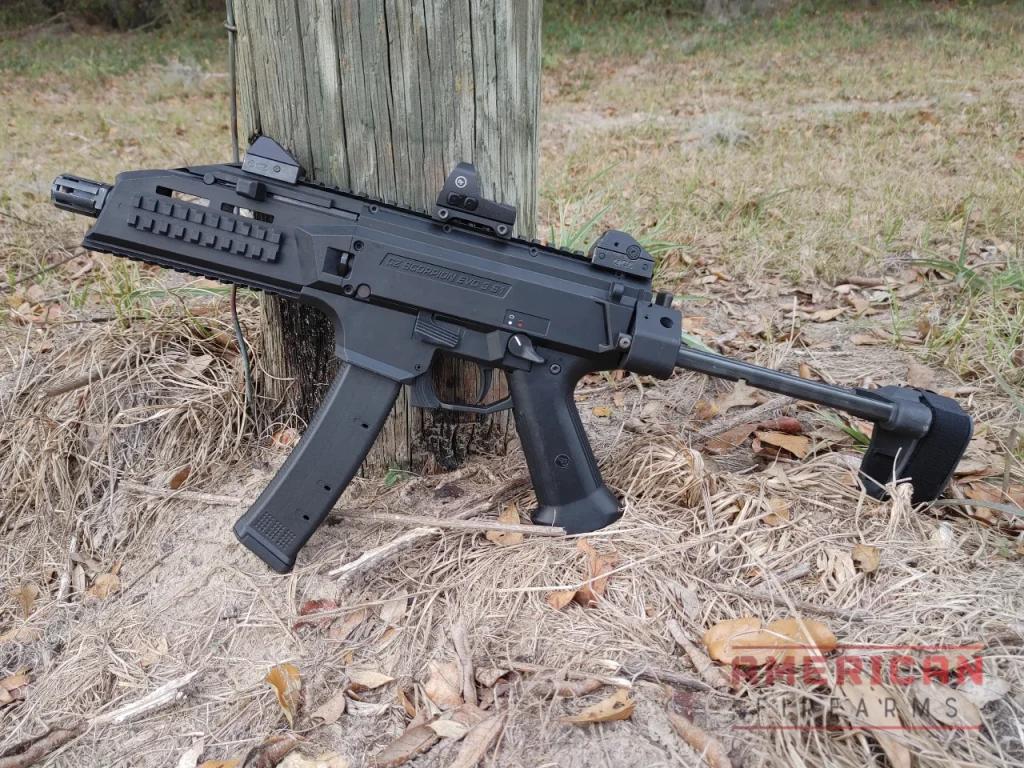
Simple and reliable, this 9mm PCC Czechs all the boxes. See what we did there?

The controls on the Scorpion are big, chunky, and easy to use. In the case of the safety lever, it’s probably too big and can slam your hand when firing. Nothing a Dremel can’t fix!
No matter the nuances, the Scorp is a fun gun that always puts a smile on my face come range time.

Want more of the CZ Scorpion EVO series? Check out our in-depth, hands-on review of CZ’s Scorpion.
6. Budget Option: Hi-Point Carbine
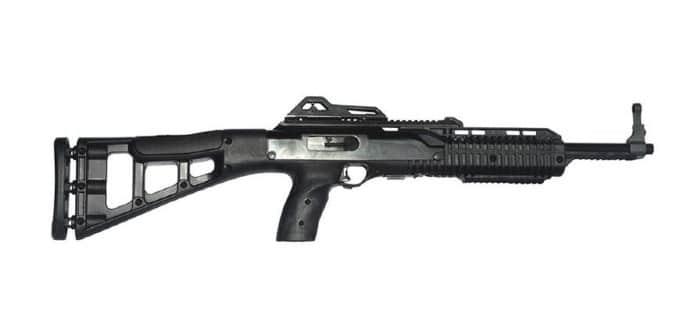
$323.99

40
EXCEPTIONAL
2026 Awards & Rankings
Performance Scores
While their handguns get a lot of knocks, Ohio-based Hi-Point has been cranking out a homely but effective blow-back action carbine since 1995 that has won hearts and minds from coast-to-coast.
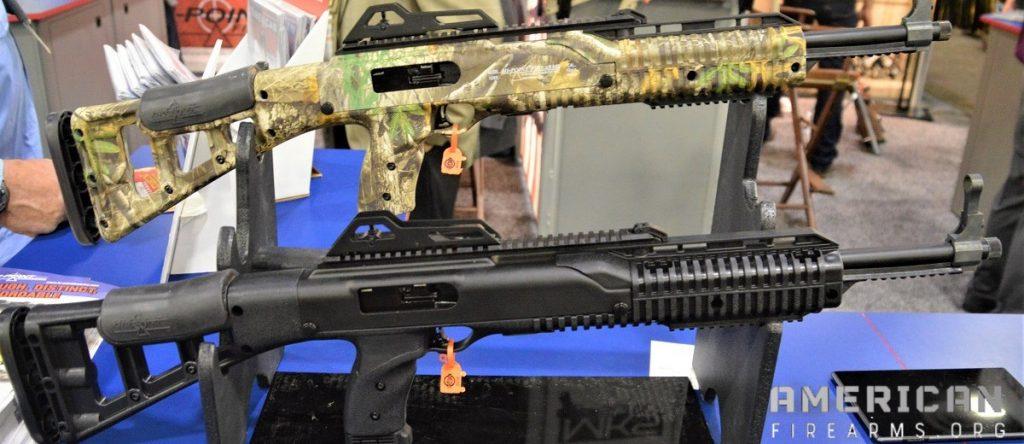
Updated from an original “Planet of the Apes” configuration to something more contemporary, Hi-Point currently produces them in probably the widest PCC caliber range of any maker including .380, 9mm, .40S&W, .45ACP, and 10mm Auto.
Further, coming in at under $300 with a transferable lifetime warranty, they have been the people’s champ for decades.
Little wonder Hi-Point cranked out 39,500 carbines in 2018 alone!
7. Most Portable: Kel-Tec SUB2000
Florida-based Kel-Tec was best known as a maker of inexpensive handguns until they moved into the rifle market with their SUB2000 PCC platform in 2001, delivering what you might see marketed as “the ultimate backpack gun.”
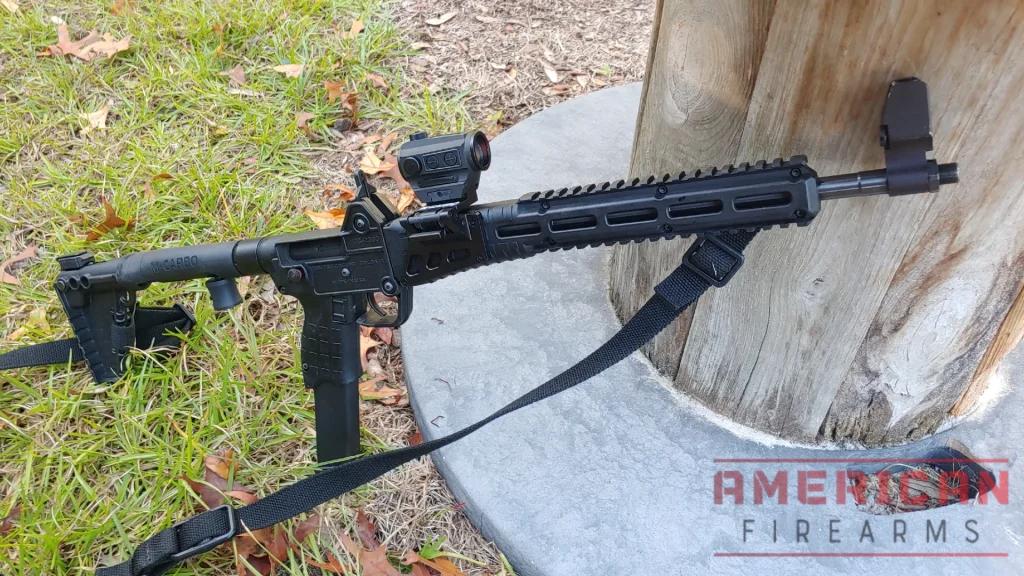
Now, with the gun in its second generation, the handy little Kel-Tec carbine is one of the lightest on the market at just 4.5-pounds, packs a familiar pistol grip, and folds in half for easy storage — a feature (almost) nobody else can touch.
The new M&P FPC is an interesting entry into the foldable PCC market, so we’ll see how well it competes once I get my hands on one.
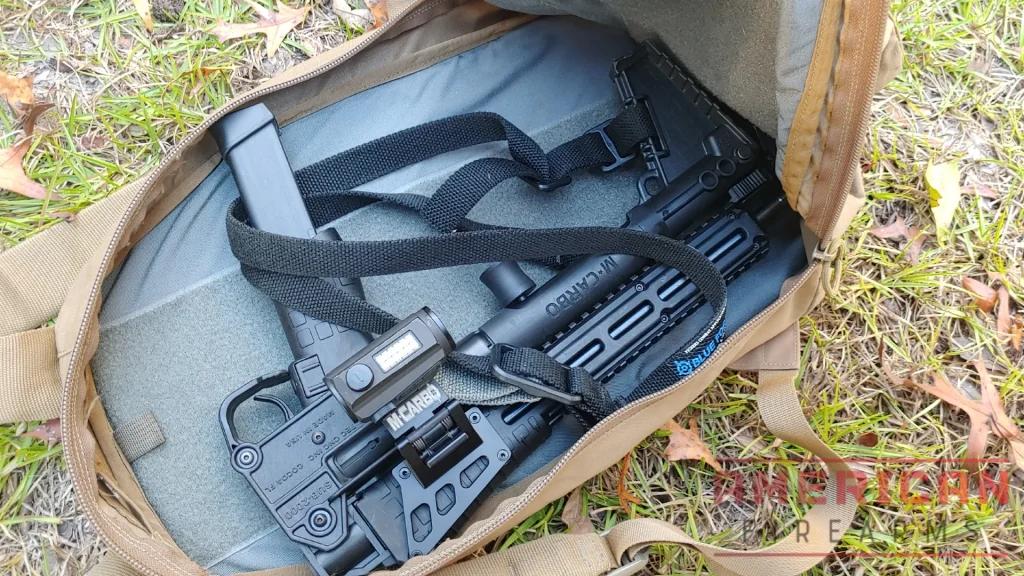
While the standard SUB2000 runs 9mm Glock magazines, it’s also available in multiple calibers, so fans of the .40 S&W rejoice. Just pick the version that gives you the most interchangeability with your current pistol line-up. We covered the foldable PCC in depth with our hands-on review.
While a solid gun, the foldable PCC certainly has its quirks — the charging handle is less of a handle and more of a nub, and the trigger breaks at almost 10 lbs, and adding anything to the top Picatinny rail will get in the way of the folding action.
But with a few smart accessories — like the MCARBO optic mount — the shortcomings of the SUB2000 can be easily overcome.
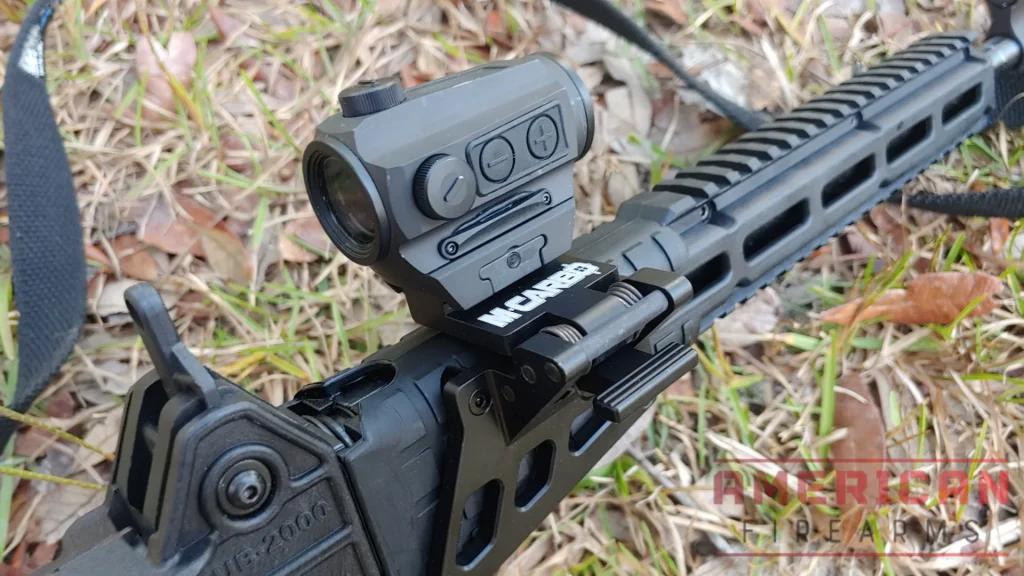
8. Best Value Roller-Delayed Pick: Springfield Armory Kuna
The Springfield Armory Kuna represents something the PCC market desperately needed: authentic roller-delayed blowback operation without the premium price tag. While shooters have long coveted the MP5’s legendary smooth-shooting characteristics, civilian versions like the HK SP5 command $3,000+ price tags that keep them out of reach for most enthusiasts. The Kuna changes that equation entirely.
Manufactured by HS Produkt in Croatia—the same company behind Springfield’s Hellion bullpup and XD pistol series—the Kuna isn’t another AR-9 clone. This is a purpose-built personal defense weapon using the same roller-delayed system that made the MP5 famous, but wrapped in modern features and priced to compete with straight blowback guns.
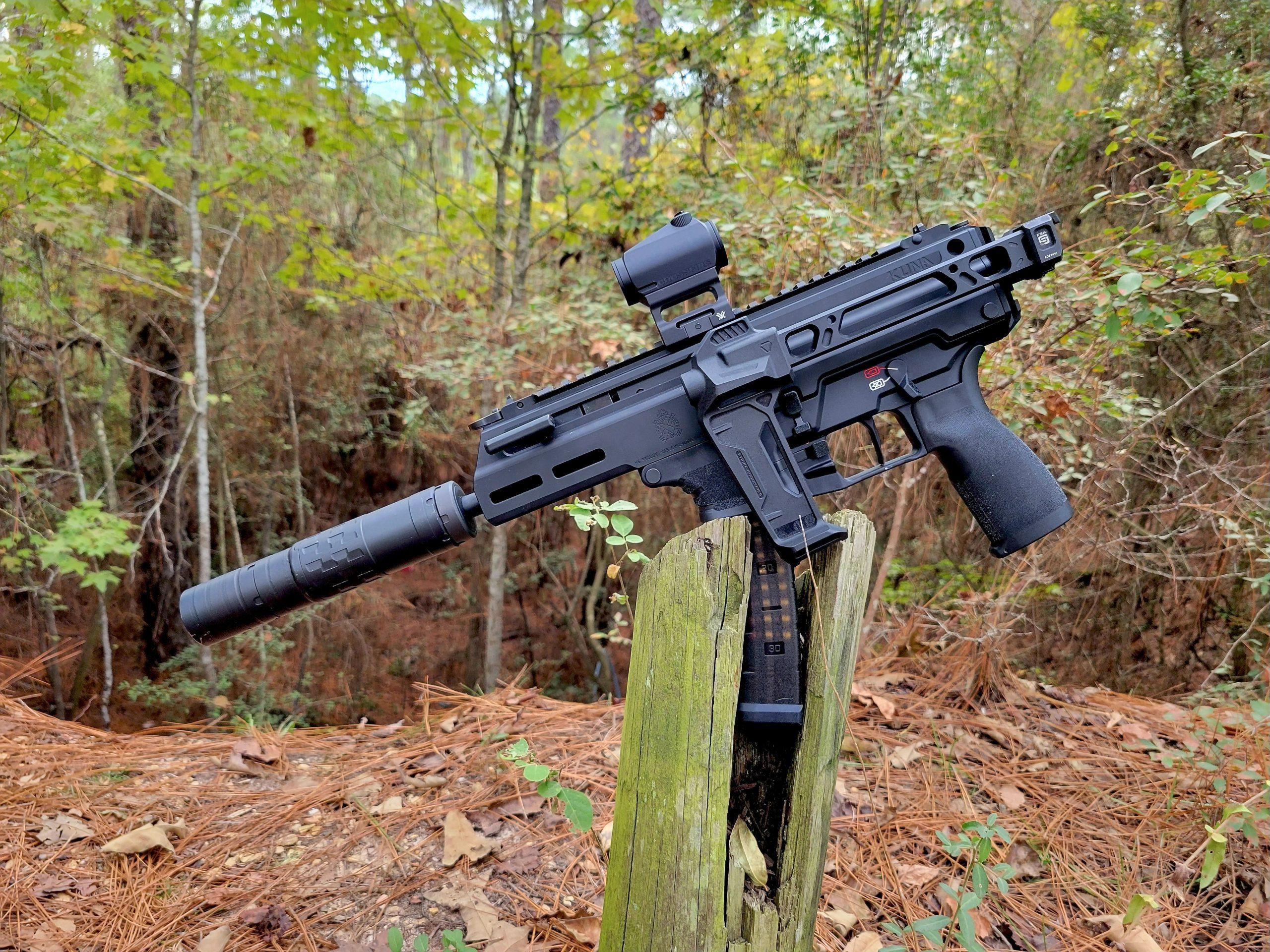
The Roller-Delayed Difference
Unlike most PCCs that use simple blowback operation with heavy bolts and stiff springs, the Kuna employs a small roller that temporarily locks the bolt in battery. This mechanical delay allows chamber pressure to drop before extraction begins, converting what would be violent recoil into controlled, smooth movement. The practical benefit is immediately apparent: noticeably softer shooting than blowback competitors, with minimal muzzle rise and exceptional control during rapid fire.
During our testing with over 1,000 rounds, the Kuna produced approximately 30 percent less felt recoil than comparable blowback AR-9s. We consistently ran 0.15-0.18 second splits on steel at 10 yards—competitive with full-size duty pistols. The system also excels when suppressed, keeping more gas flowing forward through the can rather than back into your face.

Build and Features
The monolithic 7075-T6 aluminum upper receiver houses the roller mechanism with an integral handguard featuring M-LOK slots at 3, 6, and 9 o’clock. The full-length Picatinny rail accommodates any optic configuration. The 6-inch cold hammer-forged barrel wears 1/2×28 threading with an included multi-port brake.
Springfield designed truly ambidextrous controls—not just reversible. HK-style safety levers, dual push-button magazine releases, and bolt release paddles work equally well from either side. The non-reciprocating charging handle reverses in five minutes with basic tools.
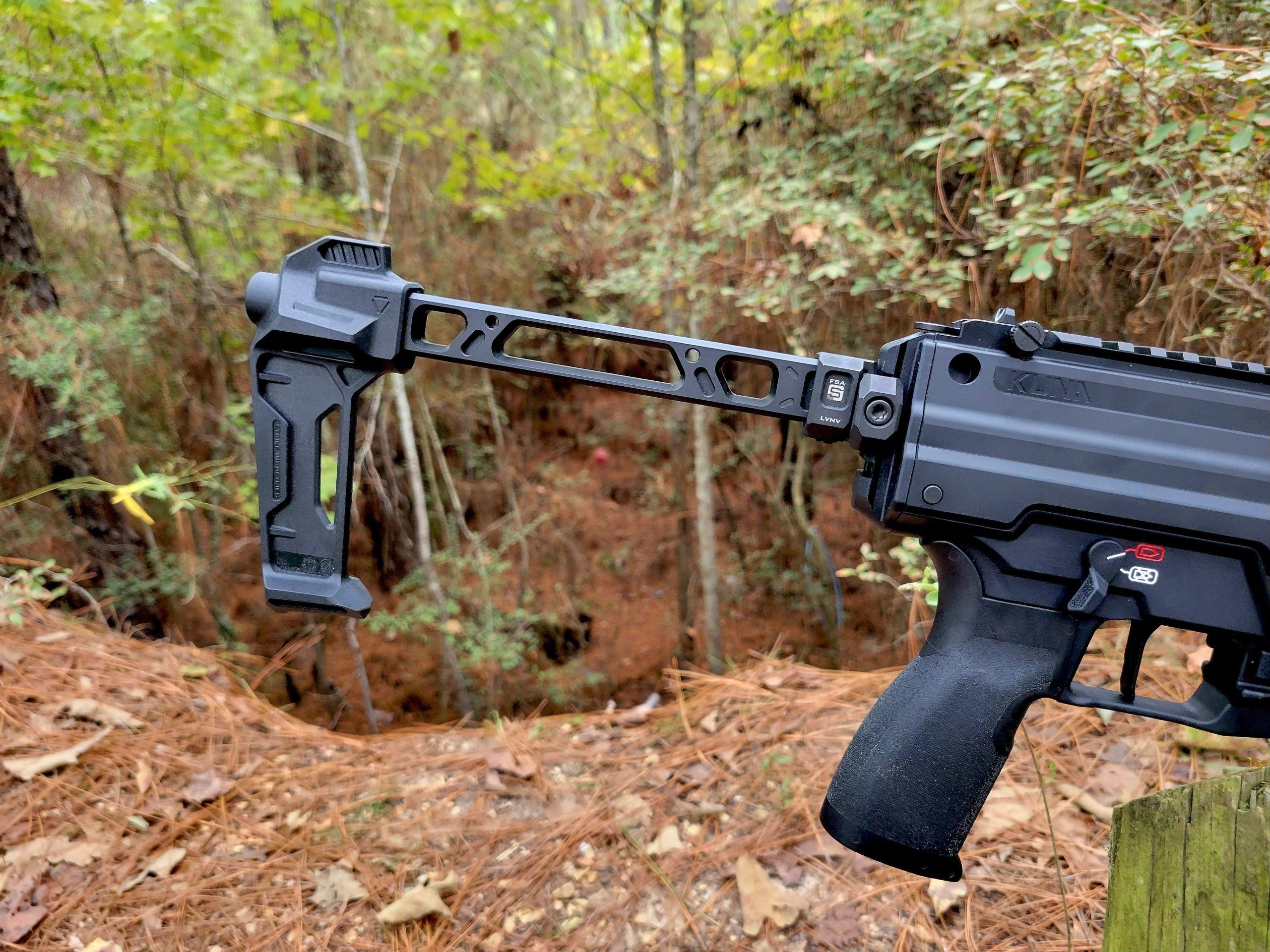
The Strike Industries FSA folding brace deploys to 24.5 inches overall or folds to just 15.5 inches—shorter than most AR pistols and genuinely packable in laptop bags or vehicle storage. The hybrid flip-up sights provide both pistol-style and precision peep configurations with an 11-inch sight radius. During testing, we achieved 4-5 inch groups at 50 yards using the peeps.

Verdict
The Kuna occupies the sweet spot: premium roller-delayed performance at a price competing with basic blowback guns. At $1,050 street price, it’s the most affordable path to genuine HK-style smoothness. If you’re shopping PCCs and want roller-delayed refinement without luxury pricing, the Kuna deserves serious consideration.
9. Best PCC Scout Rifle: Ruger PC Carbine
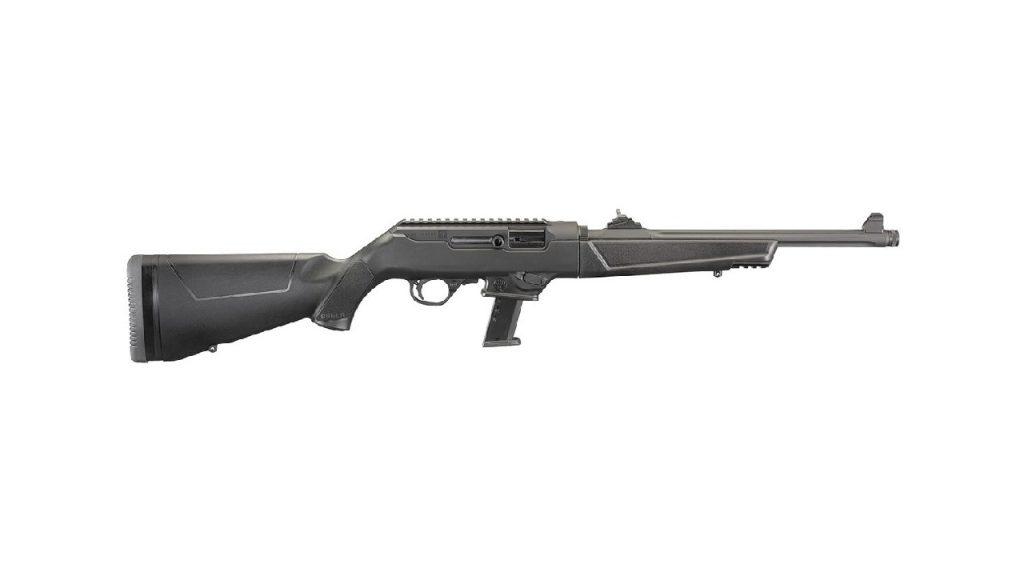
$699.99

47
EXCEPTIONAL
2026 Awards & Rankings
Performance Scores
Ruger stopped production on their Police Carbine offering in 2006 as the company’s companion P-series pistol line was ending.
With their ear to the ground for what the public wanted, however, Ruger introduced an updated Pistol Carbine in 2017, ready to work with either the magazines from a Ruger American pistol or those of Herr Glock’s.
Featureless models are also California-compliant, which is a big deal as there are 13 million gun owners behind the lines in that West Coast state.
What is a PCC?
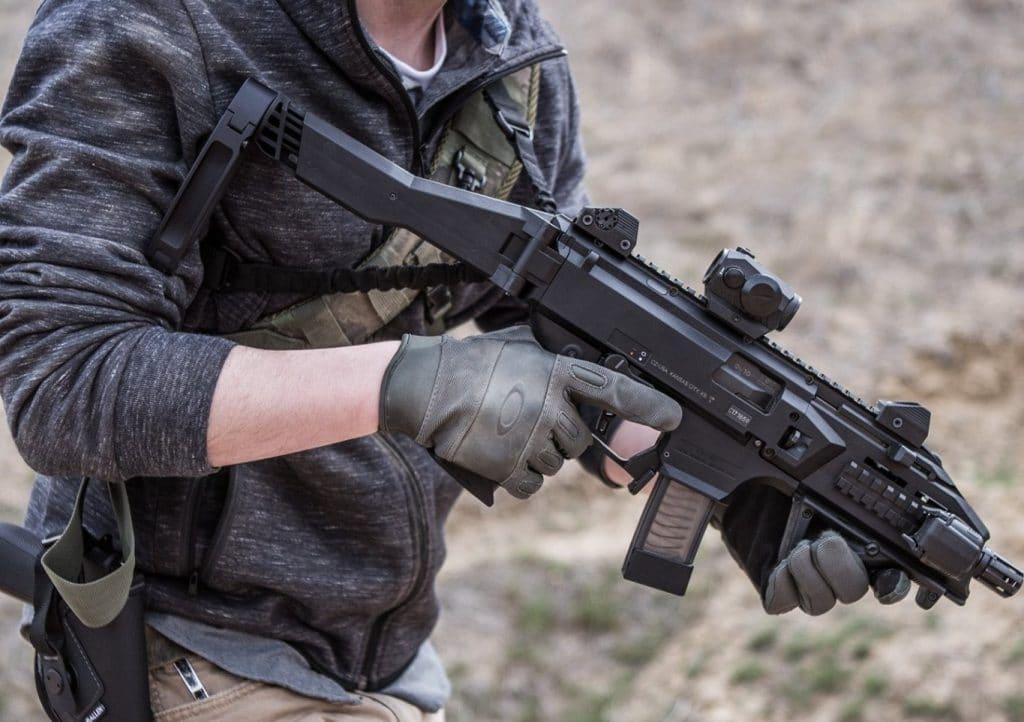
From the very start of the age of firearms, going back to the days of matchlocks and portable “handgonnes,” early muzzleloaders split into two schools of thought: long-barreled guns best suited for working at range and shorter-barreled varieties small enough to be carried in a belt and used quickly at short ranges.
Where PCCs and rifles diverged
These respective guns continued to evolve into rifles and pistols, with their ammunition evolving along similar, purpose-driven lines that largely made them incompatible with each other as rifles fired heavier bullets with a bigger powder load while handguns, due to their size, typically went smaller on both accounts.
These differences continue today.

Handguns meet shoulder stocks
Notably, around the 1840s, the concept of a handgun that could be fitted with a shoulder stock to allow it to be more useful at range while still enabling it to be compact enough for everyday use in tight places under field conditions led to guns such as the Third Model Colt Dragoon and the Springfield M1855 Dragoon.
The “Dragoon” name in the case of these handguns refers to their use by horse-mounted infantry, a popular 19th-century idea to field units of very mobile foot soldiers in the days before the bicycle or automobile.
However, these shoulder-stocked handguns were less than popular, as their percussion-cap firing mechanisms, a short length of pull, and open cylinders (in the case of the Colt at least) often left the user’s face a little on the medium-rare side.
Enter Henry’s .44 rimfire
Nonetheless, by 1870, the widespread use of all-up cartridges started to put the practice of muzzleloaders in the primitive weapon category.
Henry’s .44 rimfire round that year pulled off a neat trick– the ability to be used in either the 15-shot Henry or 13-shot Winchester Model 1866 lever action rifles or the six-shot Smith & Wesson No. 3 revolver.
The days of the pistol caliber carbine, or in this case the revolver caliber rifle, had finally been realized.
Pistol rounds find a home in lever action rifles
While the use of the .44 Rimfire soon died out, the concept of chambering lever-action rifles in popular revolver calibers endured and Winchester’s .44-40 and .32-20 centerfire cartridges soon found a home in just about every popular six-shooter and lever gun of the 1880s and 1890s.
A cowboy, lawman, hunter, or rancher of the era only needed a single handy belt or box of cartridges for both their rifle and handgun.
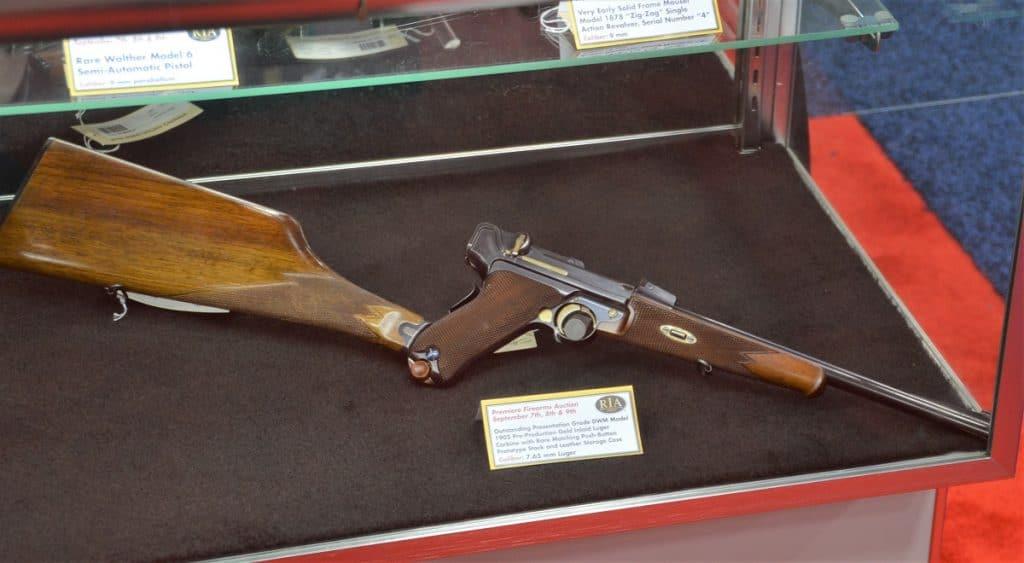
Autoloaders enter the game
Fast forward to the 1900s and autoloading guns became viable options.
As with revolvers in the previous century, there was a concerted effort to simply add a shoulder stock to a .30-caliber or 9mm pistol to turn it into a carbine, and there were numerous models of Lugers, C96 Broomhandle Mausers, Colt Military Models, Browning M1903s and Hi-Powers that could use such a detachable wooden stock.
Once again, this proved less than ideal for several reasons and by 1921 the first dedicated carbine-sized pistol-caliber submachine guns, like the Thompson and Bergmann MP18, were on the market.

The gun world branches again
With that, the gun world diverged to a third branch, with handguns, rifles, and now SMGs heading off in their own respective directions for generations.
Then, by the mid-1980s, the sub-gun branch devolved in a sense to give us the modern PCC.
Burp guns arrive
Models of super sexy 9mm burp guns like the UZI, HK MP5, and Colt SMG began to be marketed in semi-auto-only variants with fixed stocks and 16-inch barrels to keep them out of the NFA’s territory and thus, tax stamp free.
The same can be said for Colonel Thompson’s legendary .45ACP “Chicago Typewriter.”
PCCs Evolve
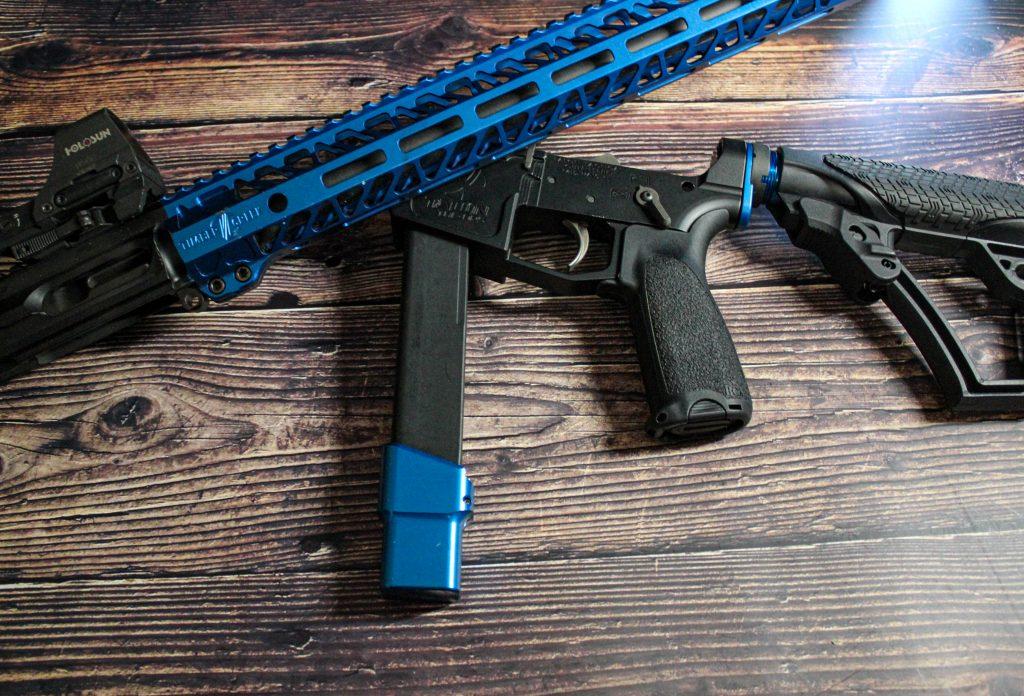
While the federal “assault weapon” ban from 1994 to 2004 put a big crimp on the sale of those early “scary” looking PCCs, new guns took up their slack.
The featureless Marlin Camp Carbine and the Ruger Police Carbine, guns designed from the ground up to use 9mm ammo, .40 S&W or .45ACP and accept commonly-found handgun magazines, such as those for the M1911 or S&W Model 59 in the case of the Marlin and Ruger’s P-series pistol mags when it comes to the Police Carbine.
Since then, the number and types of PCCs on the market have exploded– and for good reason.
Why a PCC?
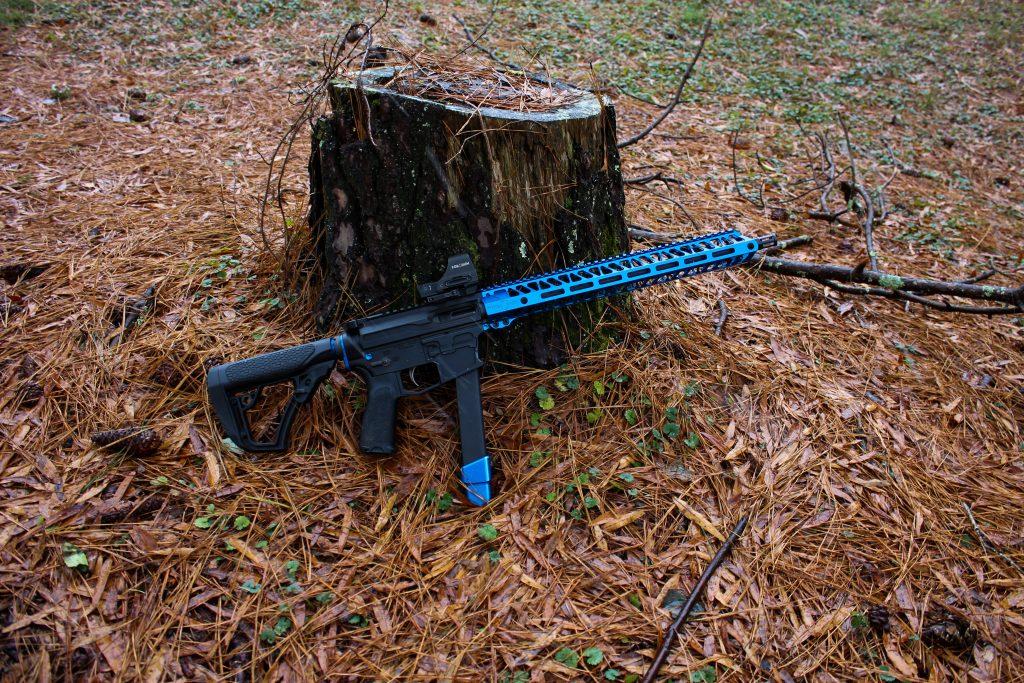
A 9mm carbine is appealing for a variety of reasons. Using more compact ammunition than full-sized rifles, most pistol caliber carbines can carry more rounds for the pounds so to speak.
For example, 20 rounds of 7.62 NATO weighs 17.5-ounces while 20 rounds of 9x19mm handgun ammunition hit the scales at just 5.2. Helpful when on the trail.
1. Trail (and wallet) friendly
In the hands of those lugging such a firearm around camp or the trail, every ounce counts.
Additionally, due to the short length of the cartridge case, most PCCs use a simple straight blow-back action, which eliminates complex piston and gas systems, making the guns both reliable and easy to maintain.
2. Lower Recoil than Rifles

Further, these smaller handgun-caliber cartridges, when fired from a carbine-sized firearm, impart less felt recoil to the user than even intermediate rifle rounds, making quick follow-up shots possible– setting up a PCC as an ideal platform for recoil-shy users or novice shooters and making them almost rock-steady by comparison.
This factor sometimes draws snickers on the USPSA match circuit, which has had a PCC allowance for handgun users since 2016, as the ease of use on these guns is seen by some as a “cheat.”
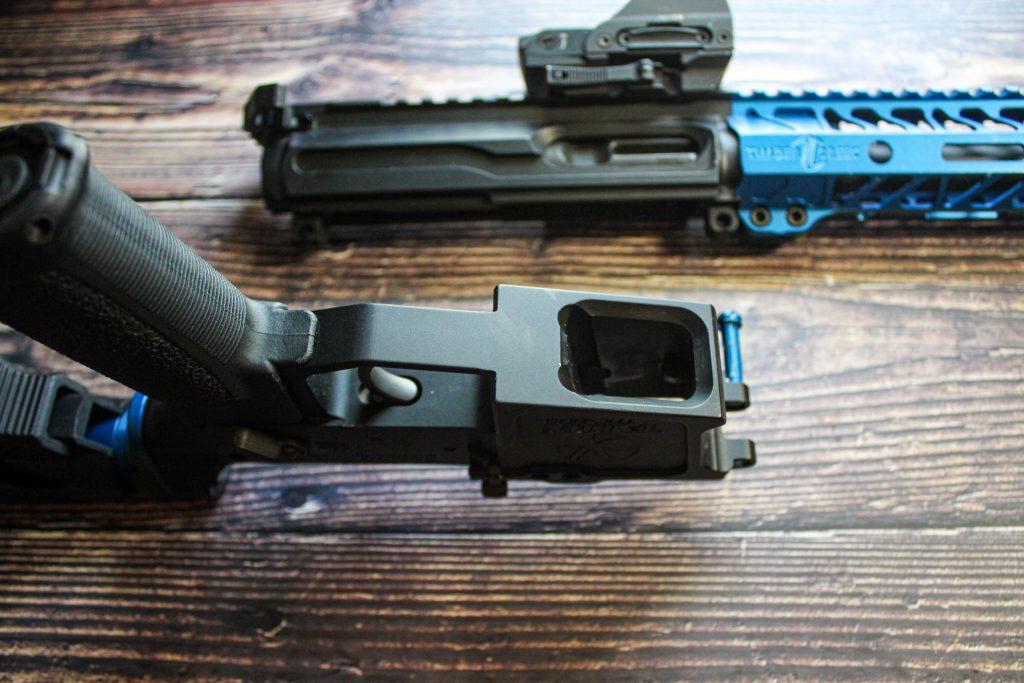
3. More accuracy than a handgun
Another bonus when it comes to marrying up pistol calibers with a small carbine-sized rifle is that it makes the round inherently more accurate for the user due to the longer sight radius between front and rear iron sights – although not quite as much as a full-length long gun.
While the added inches on the barrel leads to a more optimal powder burn from the cartridge, trimming muzzle blast at the same time it adds velocity to the bullet.
4. Better ballistic performance
In widely circulated tests, a 115-grain 9mm JHP picks up an additional 200 fps of velocity when fired from a 16-inch barrel of a PCC versus the more traditional 4-inch barrel of a full-sized handgun and even higher with +P ammo (which should be the choice for personal defense with a carbine) putting a 9mm out of a PCC into the same fps ballpark as a .357 SIG fired from a pistol.
This naturally translates to a significant climb in deliverable energy downrange. In tests on ballistics gel, the same results are seen.

5. Smaller size
Finally, PCCs are very compact– usually more so than even a smallish rifle-caliber AR– while providing much more real estate for accessories such as weapon-mounted lights, optics, and active lasers than a handgun in the same caliber, leading the carbine to clock in as a home defense tool for many users.
Important PCC Features
Most people who are looking to buy a PCC already own a pistol, and they want a PCC to give them a little longer range and better handling than a handgun can offer. That also means that those same folks also have pistol magazines.
1. Magazine Compatibility

Thus, it makes some sense to find a PCC that works with the magazines you already have. It’s not generally hard to find several manufacturers that will make a PCC that works just fine with your existing pistol magazines. In particular, PCCs that take Glock, Ruger, and Sig magazines are becoming more popular.
This is a good thing for several reasons. First, it saves you some money. For most shooters, budget is a concern; this is especially true when ammo seems to be getting more expensive by the moment.
If you can use magazines you already have to feed your new PCC, it’s a welcome way to save some money to use on things like the aforementioned ammunition or some accessories for your new PCC.
Additionally, it makes your life simpler when it comes to using the PCC. If both your handgun and your PCC take the same magazines, it’s one less thing you have to think about. A lot of folks get PCCs to use for defensive purposes.
If, for example, you decide to run both your pistol and your PCC as home defense weapons, then staging magazines on a plate carrier or somewhere else in your home is much easier if the two share common magazines.
2. Cartridge Compatibility
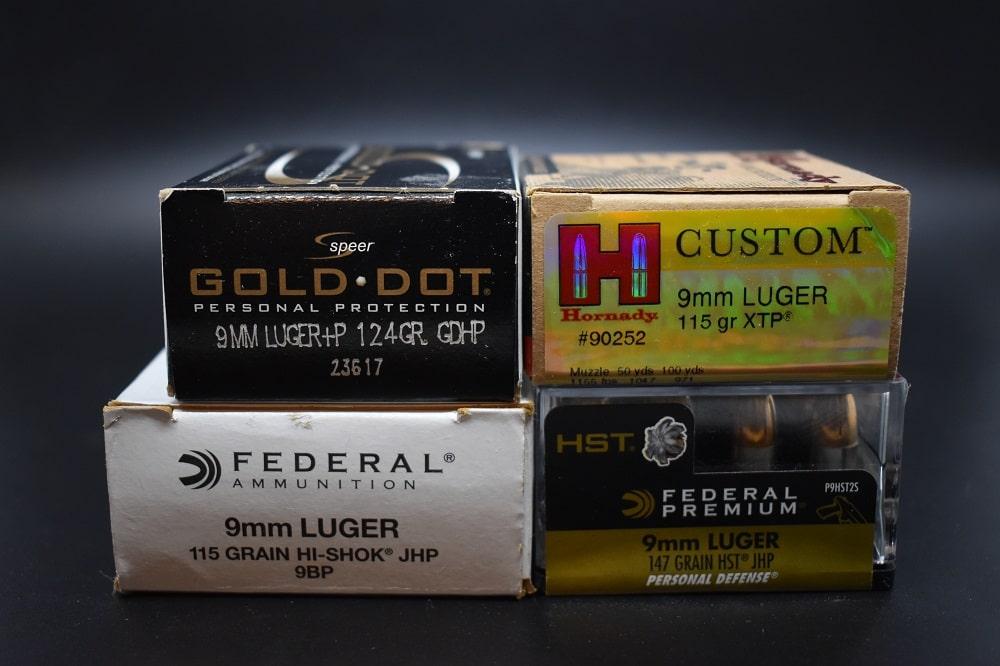
Beyond magazines, the same is largely true of caliber as well. Most PCCs are in 9mm, but it’s possible to find them in .40 and .22 as well as some other calibers, though they are less common.
If keeping logistics simple is something that you find important, then having a single caliber used in multiple firearms is a great benefit.
Cross-compatible calibers and magazines will be of special interest to folks who want to use their PCC in competition shooting: being able to swap magazines between guns can make a rig a lot simpler, and that simplicity will shave seconds off your times during highly technical stages.
3. Form Factor
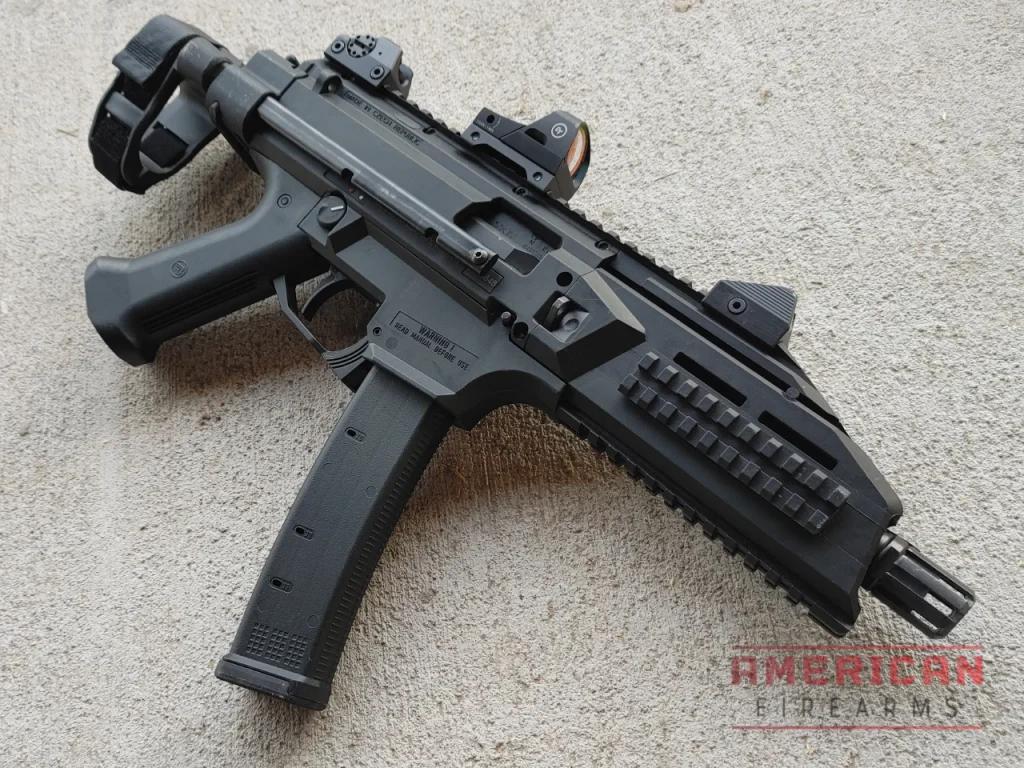
Pistol Caliber, or 9mm Carbine, is a catchall term for firearms about the size of a submachine gun and fires a pistol round.
Within that larger category, there are a few different ways to buy and categorize one, each with its benefits and drawbacks. Depending on the state, the simplest way to get a PCC is to buy one as a rifle.
This means that it will come with a barrel length of over 16″, and you’ll be able to put on any accessory you wish. These require the least paperwork, but the downside is that you will have a reasonably long barrel, which some people think defeats the handiness of a PCC.
The second kind of PCC format is a pistol. The barrel can be as short as you like, which keeps the overall firearm handy. Instead of a stock, these will likely come with an arm brace, and you cannot mount a forward grip on them.
Some states also have a waiting period or more strict rules for buying pistols, which can be an additional hurdle. Finally, you can buy your PCC as a short-barreled rifle or SBR.
This requires a fair bit of paperwork with the ATF, but the benefit is that your PCC will be able to have a stock, any accessories that you like, and you can add a forward grip. In an ideal world, the SBR is the way to go.
But, given that the aforementioned ATF paperwork takes a lot of time and money, most people are likely to go with pistol-format PCCs, as these pistol rounds don’t benefit all that much from a 16″ barrel, and keeping the overall package of the firearm small is one of the most important things to a lot of folks who are considering a PCC. Your selection will depend on where you live and the kinds of paperwork and restrictions placed on certain firearms.
Some places, for instance, have magazine size restrictions on rifles but not handguns; in that case, a pistol makes sense. Others mandate you to be 21 to buy handguns but 18 for rifles.
You’ll have to consider these examples when deciding what classification of PCC you want to buy.
4. Intended Use
As with most firearms, there is an almost endless variety of PCCs on the market today, so having some guiding principles to help you choose what works best for you will help cut through that confusion. The question we’d ask ourselves in buying a PCC is: what will I be using it for? If, for example, you’re going for as close to a copy of your favorite military submachine gun as you possibly can, then you might be willing to forgo a lot of the advice given here so far.
For example, a Thompson submachine gun copy will be relatively heavy and takes proprietary magazines. But, if you want a Thompson, that won’t matter much to you. If, on the other hand, you’re looking for a weapon with which you’re familiar so you can defend yourself, then other options open up. Nowadays, many gun owners are familiar with the AR platform in its 5.56mm versions.
But the AR comes in 9mm as well: having the same controls and handling on your PCC as your rifle is great if you think you may have to use the gun under duress.
Finally, if you think of the PCC as more of a backup firearm, then some of the lighter-weight options might do well for you. For instance, the Keltch Sub200 is extremely light and folds in half for storage. This kind of PCC won’t have all of the accessories and features of the larger models. Still, if you are, for example, backpacking, having something with a little more range than a pistol — that also takes your pistol’s magazines — is a great thing to have for peace of mind in a backpacking kit.These are just a couple of examples, but with PCCs, the options are getting more diverse daily. Instead of getting overwhelmed with too many choices and either buying no PCC at all or ending up with one or more that you’re not happy with, take some time and think about how you’d use this firearm. If your answer isn’t clear cut, then something that does several things well, or can be used in different roles with different accessories, might be just the ticket for you.
5. Accessorization
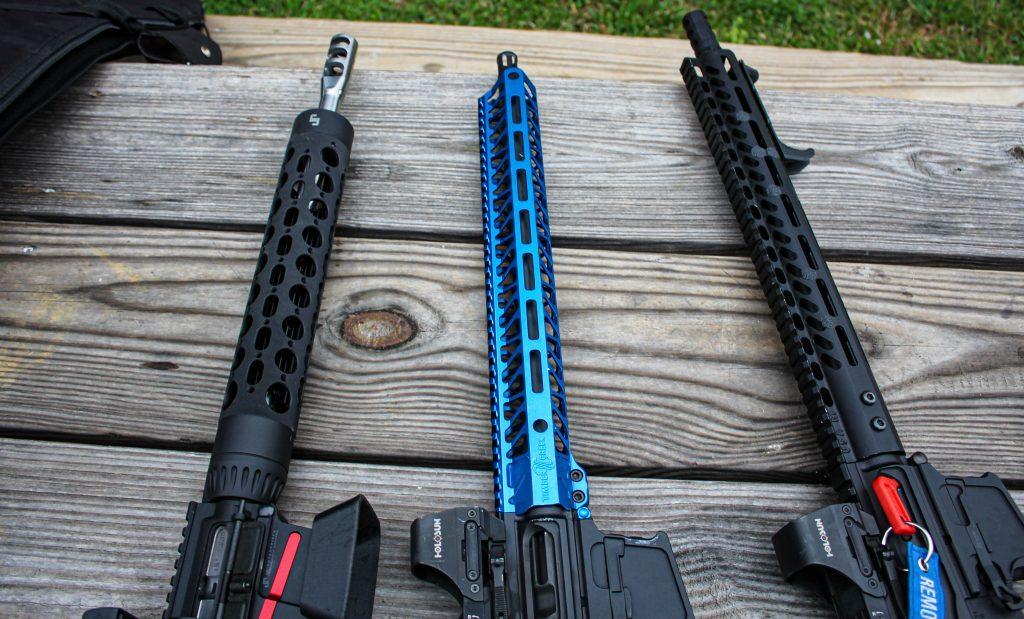
Stemming from the point about intended use, it’s also wise to consider what kind of accessories you’ll be able to get on your PCC once you have it and have decided what you want to do with it.
Here, there are some legal considerations as well. For instance, you cannot put a stock or a forward handgrip on a pistol. If you want those accessories, then a rifle or an SBR is the way for you.
Second, think carefully about mounting optics. While many PCCS nowadays come with standard Picatinny rails for mounting optics, some, including older variations of the MP5 and its clones, did not and thus have to use other styles of mount that can be a bit of a hassle to find, let alone install.
From there, some pistol PCCS come with braces: these are an excellent option for folks who want to use their PCC braced to get something shorter than a rifle would allow. Others do not come with the brace, and you’d have to provide it: figuring what you’d need to get a brace on the gun before buying it will let you know precisely what you’re in for once you buy it.
Finally, some sling mounting points, whether included in the firearm or added by you afterward, will make a ton of sense for most people: PCCs tend to be used as either competition or defense guns. In both situations, being able to transition to another weapon quickly might be something you need to do, necessitating a sling.
A lot of the accessory-based advice is centered around more contemporary designs: it’ll be a little more challenging to get an optic or a sling on older reproductions of military SMGs, but in those cases, people generally know exactly what they’re getting into.
If you want a ton of accessories on your firearms, then the more up-to-date PCCs will almost certainly offer what you need in terms of rail space and mounting points.
For most people, getting an optic and a sling, at the very least, on their PCC will help make them shoot a lot better with these handy carbines.
Types of 9mm Carbines

- Submachine Gun Lookalikes. Sadly, it’s relatively hard to own a real, fully automatic submachine gun here in the USA. Thus, a lot of pistol-caliber carbines are lookalikes to submachine guns. From this list, the Vector and the Scorpion come to mind. It’s essential, though, to note that these are primarily lookalikes and vary mechanically from their fully-automatic cousins. Generally, submachine guns fire from an open bolt, whereas most PCCs fire from a closed bolt. It means a much lower rate of fire for most of us, which is a bummer, but closed-bolt guns tend to have much better triggers, which is nice.
- Downsized Rifles. Second, many PCCs these days are sized-down versions of rifle platforms. The PSA Gen4 PCC is a great example of this. These PCCs are AR lower receivers with a 9mm upper to use pistol magazines in some cases. Still, there are cases where the lower receiver is also different from those of the AR series of rifles and pistols. The nice thing about these is that there is usually at least some accessory compatibility, and this type of PCC controls are familiar to many shooters.
- True PCCs. Third, some PCCs are original designs meant to be excellent pistol-caliber carbines from the ground up. Here, the Ruger PCC and the Sig MPX stand out. Although they are vastly different firearms, they do share one thing in common: the designs for both of them set out to make an excellent PCC, and in both cases, the manufacturers succeeded, and we’d be more than happy to own either.
- Niche Firearms. Finally, there are some PCCs that we can’t help but describe as just plain wild. Here, we’re thinking of one of our personal favorites, the SUB2000. Its looks are an acquired taste, to say the least, and in terms of features from the factory, it’s effectively barren, but it’s hard not to fall in love with a 9mm carbine you can fold up and stick in a bag, comes with a threaded barrel, and can have a red dot attached to it. While it’s an unusual design, to be sure, we love when companies try new things and succeed in bringing an innovative firearm to the marketplace.
Pistol Caliber Carbine Pricing
- $600-$1,000. At around the $600 mark, you can get a fair few of the 9mm carbines on this list, ranging from the relatively inexpensive Hi-Point Carbine to classics like the Ruger PCC. In this segment of the market, you might not get the newest or greatest, but it’s more than possible to get a PCC that will fulfill most of your needs at this price range and leave you with some cash left over for things like optics, slings, ammunition, and magazines.
- $1,000-$1,500. At around $1200, you’ll be looking at slightly nicer PCCs that come from big-name manufacturers, and many of these will be lookalikes of submachine guns, such as the Scorpion.
- $1,500 and Above. If money is no object, then you can easily spend around $2000 for the nicest of PCCs, the Sig MPX. At this price range, expect a PCC that was designed from the ground up to be excellent, and is likely a copy of something that is currently being developed for use in military and police forces around the world.
With PCCs, it’s possible to spend a relatively low amount of money for a good gun, or as much as you like on a design that’s truly great.
How we selected these products
As much as I would love to put all these PCCs to the test there are times when certain products or categories are a real challenge — be it availability, cost, or simply a lack of resources — we can get stymied going hands-on with all the potential candidates.
Rather than present a never-ending list of all the PCCs on the planet, we selected those which we felt best represent the price points laid out above — giving you a solid representational list to serve as a jumping-off point for your own research (you are going to do you own research, right?)
To avoid disappointment or steering you in the wrong direction, we bolster our own experience with conversations with experts, comb through reviews on retailer sites & sales data, review industry publications, other blogs, and otherwise surface the best information available.
We aim for all thriller, no filler, as they say.
Additional Reading
- SSUSA Staff, Miculek Wins 4th Consecutive USPSA PCC Championship, June 24, 2020
- USPSA, PCC is not a crime, June 18, 2020
- Ballistics By The Inch, 9mm Luger Ballistics
Updated
November 16, 2025 — We removed the Kriss Vector and added the Springfield Armory Kuna, our best value roller-delayed pick that brings HK MP5-style smoothness to working-class budgets at just over $1,000.
Sign up for our newsletter
Get discounts from top brands and our latest reviews!

